

The Best Yacht Concepts From Around The World

The Stunning Ritz Carlton EVRIMA Yacht

Gliding Across Tokyo’s Sumida River: The Mesmerizing Zipper Boat
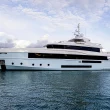
CROCUS Yacht: An 48 Meter Beauty by Admiral
- Zuretti Interior Design
- Zuretti Interior
- Zuccon International Project
- Ziyad al Manaseer
- Zaniz Interiors. Kutayba Alghanim
- Yuriy Kosiuk
- Yuri Milner
- Yersin Yacht
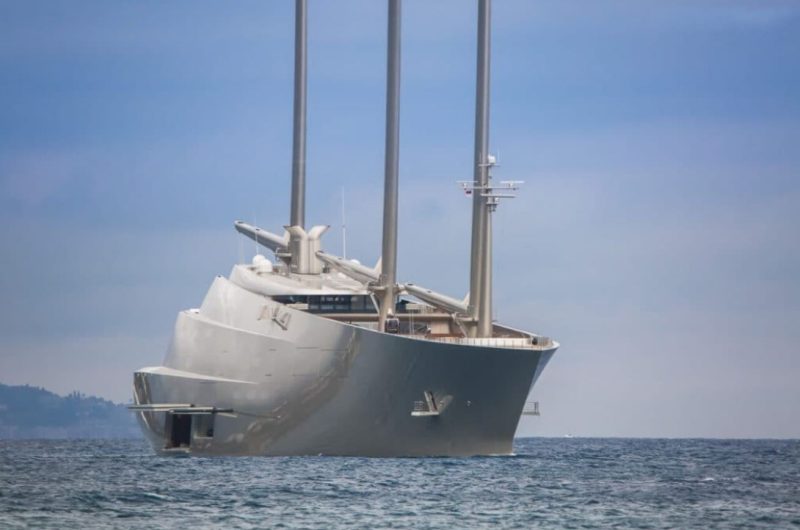
- Superyachts
SAILING YACHT A – World’s Biggest Sailing Yacht – $600 Million
SAILING YACHT A measures 143 meters making her the world’s biggest sailing yacht.
SAILING YACHT A is far more than a luxury vessel. She is a masterpiece of design and innovation combining sleek metal surfaces with futuristic naval architecture that took over two years to complete.
Launched in 2017, both the interior and exterior of this mega sailing yacht were designed by Phillippe Starck, who calls SAILING YACHT A one of his most high-profile projects.
The superyacht has taken on voyages all around the world and was most recently spotted sailing off the coasts of Gibraltar and Cyprus.
| Sailing Yacht A | |
| 143 meters | |
| 20 | |
| 20 | |
| Nobiskrug | |
| Phillipe Starke | |
| Reymond Langton Design | |
| 2017 | |
| 21 knots | |
| MTU | |
| 12,558 ton |

SAILING YACHT A interior
Both the interior and exterior of SAILING YACHT A were designed by Philippe Starck , a French architect known for his wide range of design projects.
He famously worked on the impressive MOTOR YACHT A, and the two iconic vessels share a lot of similarities in their layout and specifications.
Both yachts look incredibly futuristic and are sure to attract attention wherever they go.
While no exact details are known about the interior of SAILING YACHT A, it is rumored that she has an underwater observation pod with 30 cm (1 ft) thick glass located in the keel of the vessel.
This is one of the few parts where design mockups are publicly available, and the style of the interior can be examined.
The observation pod appears to have cream upholstery that stretches across the floor and ceiling of the cabin.
Two large symmetrical glass windows allow guests to view the breathtaking underwater world without even having to leave the yacht.
A third window is located at the bottom of the pod, which lets it feel like a true 360-degree experience and is almost comparable to a submarine.
A small floating side table provides guests with a space to place drinks or snacks in the pod and enjoy a one-of-a-kind dining experience in this unusual location.
Since the pod is located at the keel of the yacht, the large propellers are most likely visible from the windows suggesting it is most commonly used at anchor.
The superyacht has ten cabins that can accommodate 20 guests as well as a further 54 crew member.
Paparazzi photos and the work of yacht spotters provide a rare glimpse into the interior of SAILING YACHT A.
No official footage of cabins or salons has been released, although Starck’s past work suggests that the yacht would be furnished with opulent elements that perfectly combine luxury with style.
Silver and metal decorations play a large role and tie the interior design of the yacht together.
However, SAILING YACHT A was launched much later than her motorized companion suggesting her interior might be more modern with minimalistic elements rather than lavish furnishings.
Occasional photographs shot through open doors, and portholes show expensive art pieces decorating the interior of the yacht and rather absurd design choices like a set of chairs shaped like large human heads.
The yacht appears to feature a large, open salon with an elevated seating area and symmetrical arches on either side.
While details aren’t known to the public, it is rumored that SAILING YACHT A features a luxurious spa area, a sizable gym as well as an owner’s suite with several rooms that is only accessible via fingerprint.
The massive private area is said to feature a 60-inch television that disappears into the floor as well as a rotating bed.
Considering she is the largest sailing yacht in the world, it is surprising that SAILING YACHT A can only host 20 guests.
This suggests that there are spacious entertainment areas located on board, including several saloons and ample below-deck space for crew members.
Due to her large size and a small number of cabins, it is assumed that SAILING YACHT A can welcome a large number of day guests onboard for special events and celebrations.
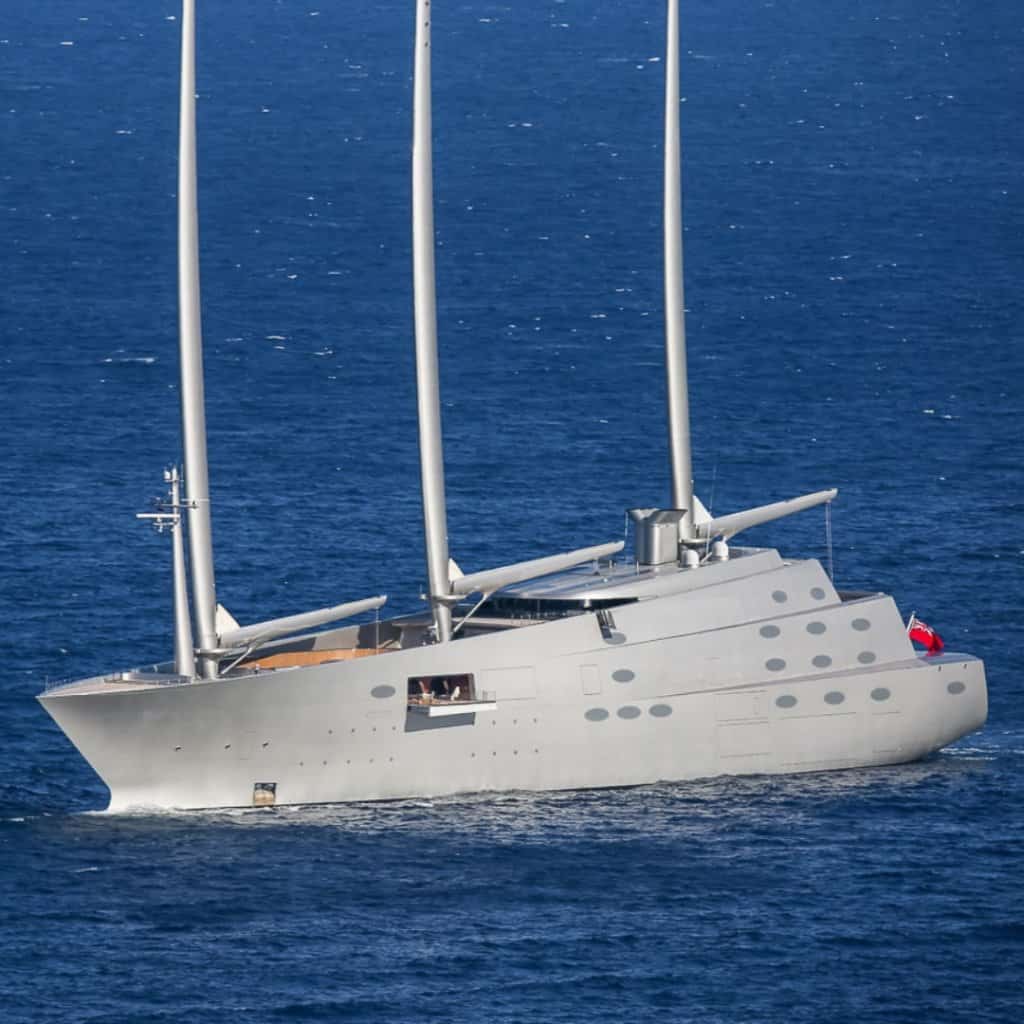
Biggest sailing yacht controversy
It has been the topic of debate that SAILING YACHT A is not the largest yacht in the world but instead the ‘largest sail-assisted motor yacht.
Depending on the definition used, that would make BLACK PEARL the biggest sailing yacht in the world.
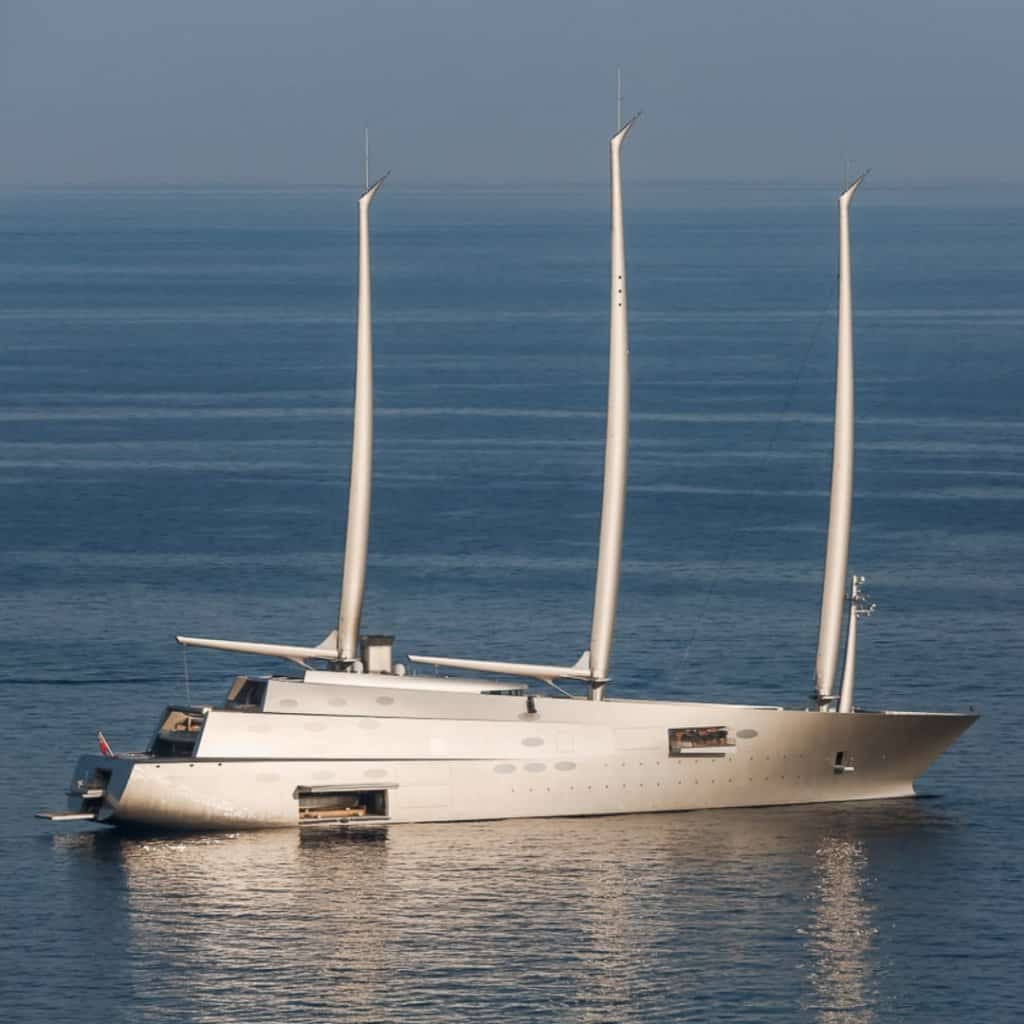
The most expensive sailing yacht
SAILING YACHT A is the most expensive sailing yacht in the world and cost an estimated price of US $600 million – a relatively “affordable” price considering her large size and tonnage.
A calculated US $48,000 per ton is considered low in the yachting industry, where European yachts are usually priced at US $60,000 per ton and over.
This average price would bring the value of SAILING YACHT A up to nearly US $800 million. However, due to the fact that the official sales price has not been released to the public, these numbers are mere estimates and cannot be validated officially.
Since the yacht is a custom project and one of a kind, it can be assumed that the total value of SAILING YACHT A lies far higher than her initial price.
In addition to any cost for the crew, supplies, and docking fees, she has annual running costs of US $50-75 million.
SAILING YACHT A is currently not available for sale or charter.
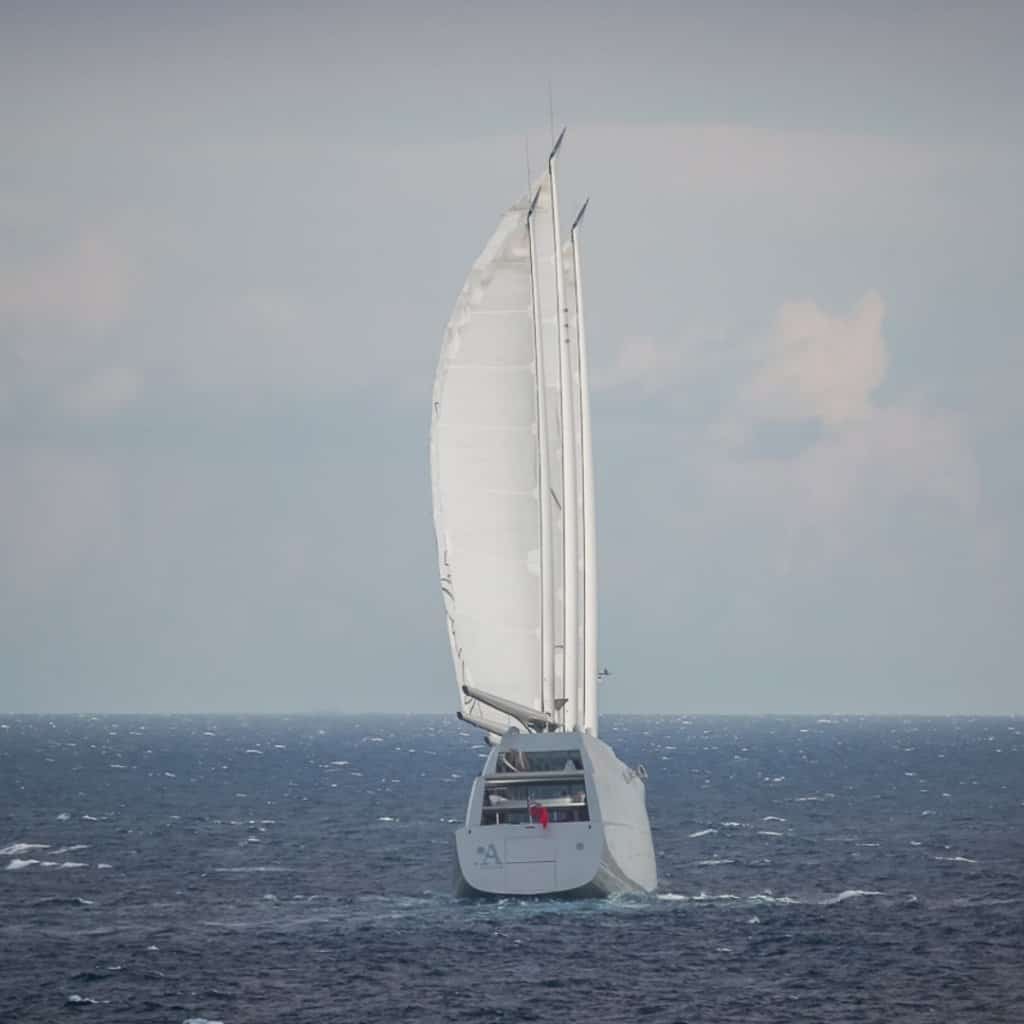
Specifications
SAILING YACHT A is incredibly large for a sailing yacht, and even compared to the longest motor yachts in the world, she would rank in the top ten.
Paired with her unusual futuristic design, this mega sailing yacht has a length of 143 meters (469 ft), a beam of 25 meters (82 ft), and a draft of 8 meters (26 ft) making her a more than an impressive vessel.
SAILING YACHT A was built by Nobiskrug , a German superyacht builder at their Kiel shipyard, and launched in 2017 after more than two years of construction.
To date, SAILING YACHT A is the largest yacht ever built by Nobiskrug and remains their flagship.
It is considered the most complicated project to ever be completed in the sailing industry and gained international media attention on its launch date. It has a total volume of 12.558 tons and is powered by hybrid diesel-electric engines.
SAILING YACHT A is considered the longest sailing yacht in the world and is more than 36 meters (118 ft) longer than BLACK PEARL, which ranks in second place on the list.
Coincidentally her project name was WHITE PEARL which is a reference to her brilliant white exterior, although it couldn’t have referred to BLACK PEARL since she was only launched in 2018, a year after Melnichenko’s masterpiece.
Her three-carbon masts stand at an impressive 100 meters (328 ft), making them some of the largest in the world and taller than Big Ben in London.
However, her large size is sometimes also limiting as she struggles to fit underneath most bridges and is therefore constrained to certain routes.
She once passed under the Golden Gate Bridge in San Francisco with only 20 feet to spare between her masts and the bottom of the famous bridge.
She is rumored to have an electric gimbal crow’s nest, which allows for remote operation and advanced wind measurements. Her sails are all white, and her masts have nearly sickle-like shapes, which add to her striking futuristic appearance.
It is noteworthy that she is commonly photographed with her sails down, which suggests she might be using her support engines more frequently than true wind power.
With a sail area of more than 3.700m^2 (40.000 square ft), she can reach top speeds of up to 21 knots which is supported by her twin 4895 Horsepower MTU engines .
Her average cruise speed lies at 16 knots, and her total range is estimated to lie at 5320 nautical miles. She features a state-of-the-art sail system that is able to raise and lower the sails and anchors at the touch of a button.
SAILING YACHT A has a steel hull and composite steel superstructure, which is unusual in the superyacht industry as most shipyards choose aluminum to reduce weight and keep the vessel light.
She currently sails under the flag of Bermuda, which is common for prominent sailing yachts.
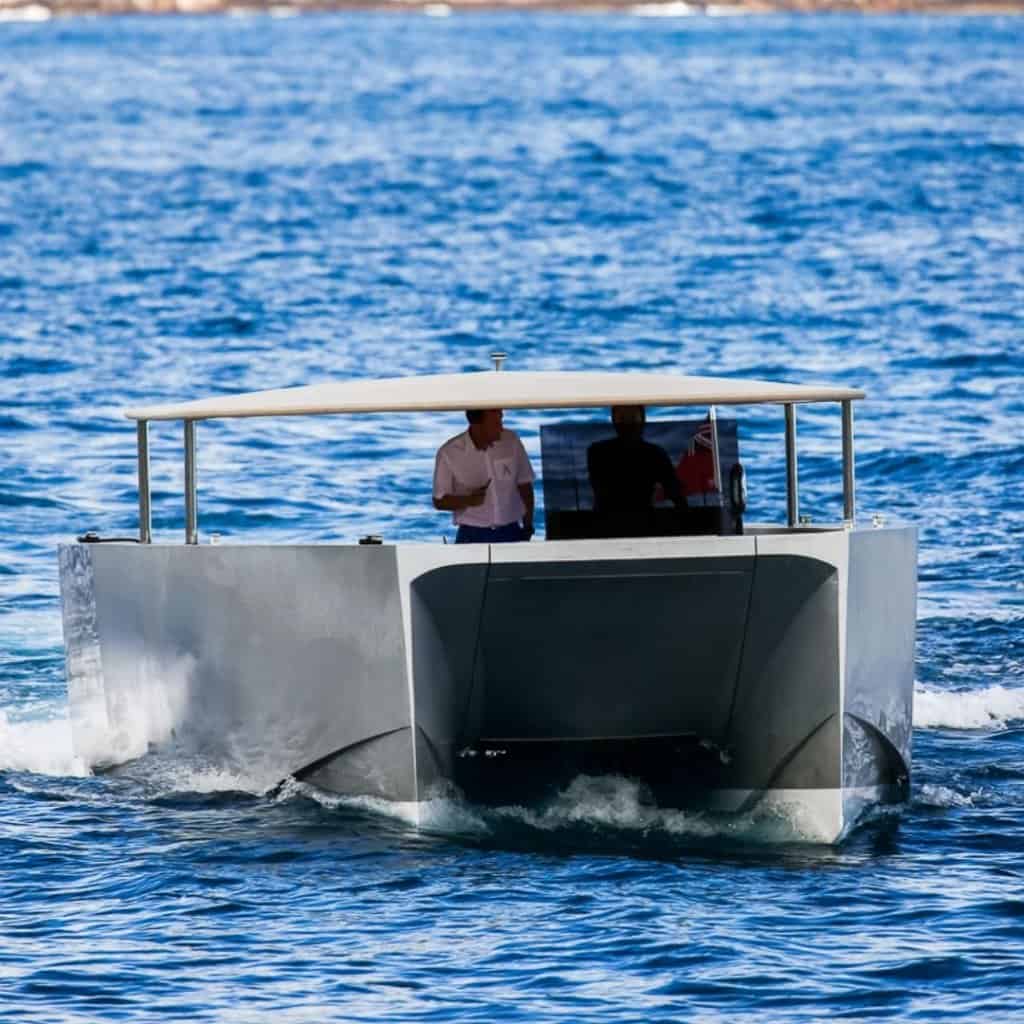
During construction, SAILING YACHT A was called project WHITE PEARL, a fitting name for this sizable vessel.
Like her interior, the exterior of SAILING YACHT A was designed by Philippe Starck, although the Dutch studio Dykstra Naval Architects played a role in the naval architecture of the vessel.
They specialize in sailing yachts of all sizes and have been involved in many prominent projects in the industry over the years.
She features eight teak decks with a large swimming pool located in the center and several elevators spread across the yacht.
She is even said to carry a submarine. The main pool is lowered into the deck allowing for additional privacy for the owners.
Her hull has 24 shell doors, which are used to access equipment and provide additional deck space if needed. She is accompanied by four tenders also designed by Philippe Starck and built by Lloyd Stevenson in New Zealand.
Their sleek and elegant design matches that of the main vessel, and they are used for transporting guests and taking them on excursions.
One of the tenders of SAILING YACHT A is a carbon fiber speedboat especially reserved for the owner who can operate the vessel autonomously whenever required without the aid of crew members.
This allows Melnichenko, who is a fan of driving high-speed cars to be independent when staying aboard his luxury yacht. The tender is small but powerful, reaching speeds of up to 53 knots.
The larger tenders can seat up to eight passengers and feature panoramic windows ideal for sightseeing and exploring but are much slower at only 30 knots.
The aft features a large garage used for storing jet skis, tenders, and other equipment.
High-profile artists such as Snoop Dogg are rumored to have performed here, although detailed evidence of such concerts remains unknown.
Whenever the aft isn’t used for performances or parties, it can be transformed into a swimming platform designed in the yacht’s iconic futuristic style.
However, despite her cutting-edge design features, SAILING YACHT A surprisingly also includes classic nautical elements. She has a wooden steering wheel that is reminiscent of a pirate ship, although it is not operational.
The captain of the vessel can instead use modern technologies to operate the massive yacht via a small joystick and touchscreen.
There are symmetric extendable balconies that protrude from the bridge of the yacht and allow the crew to have a better view to be able to gauge the dimensions of the immense vessel.
Of course, SAILING YACHT A has a modern underwater lighting system that illuminates the vessel perfectly at night.
Do you have anything to add to this listing?
- Phillipe Starke
- Reymond Langton Design
Love Yachts? Join us.
Related posts.

VANISH Yacht – Innovative $90 Million Superyacht
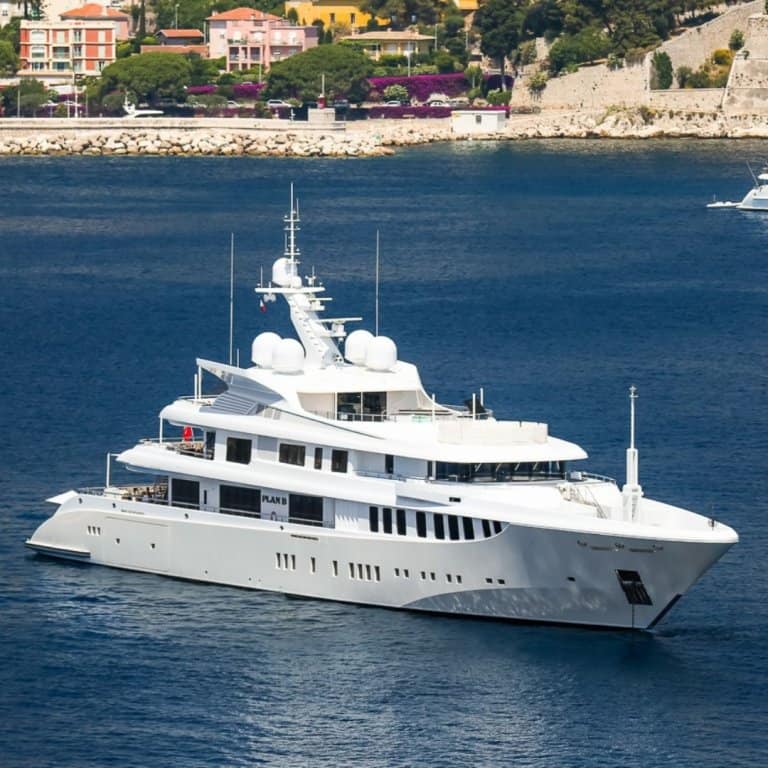
PLAN B Yacht – Luxuriant $100M Superyacht
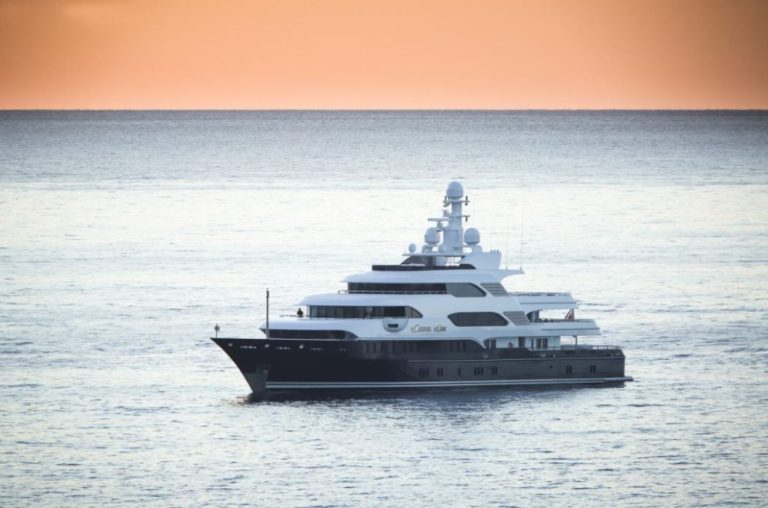
HORIZONS III Yacht – JParadise-like $80M Superyacht

CORAL OCEAN Yacht – Phenomenal $50M Superyacht

- Evolution of Innovation
Sailing Yacht A
- Jamaica Bay
- Triple Seven
- German Craftsmanship
- Behind the scenes
- Project Black Shark
Privacy & Discretion
- After-Sales
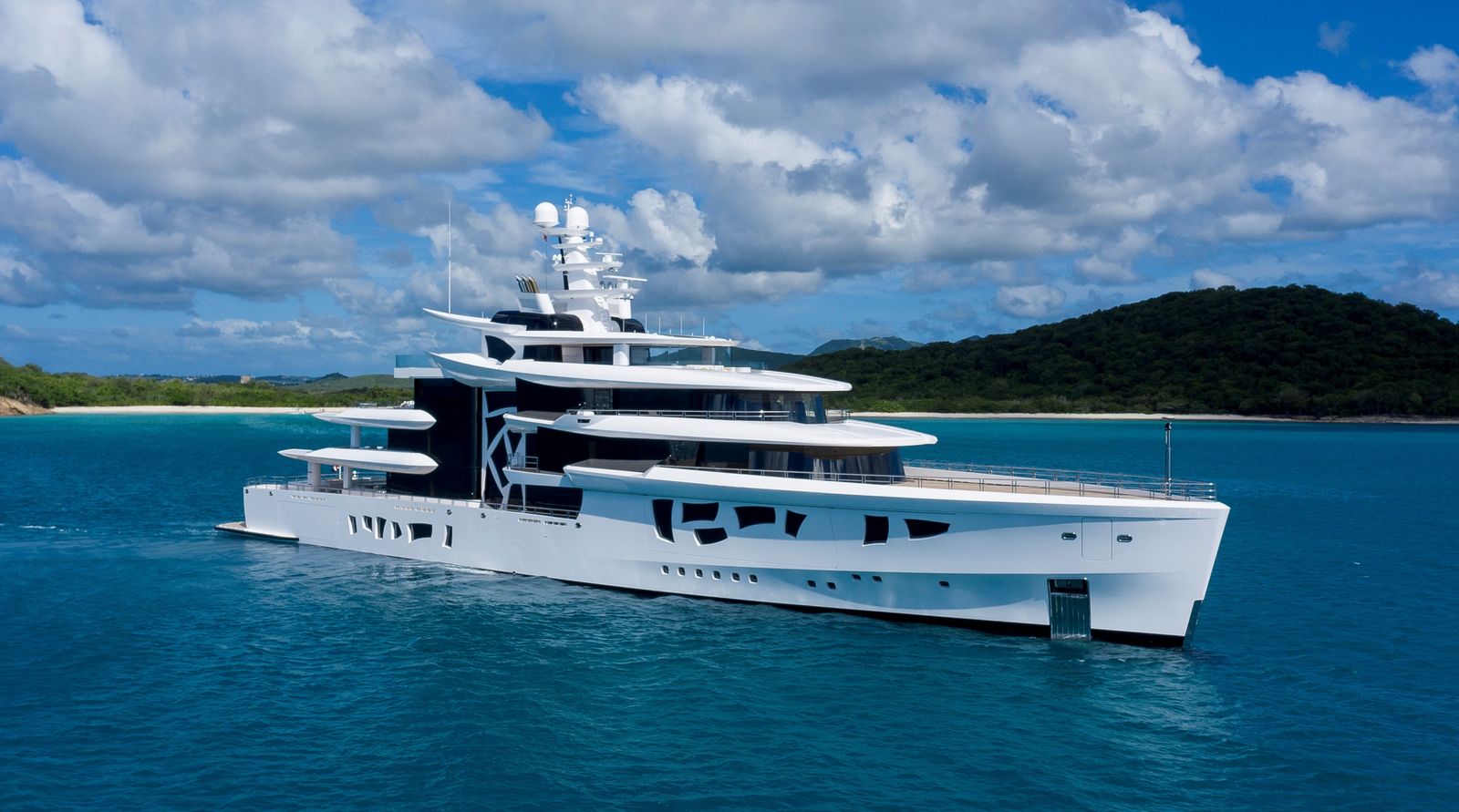
80 m / 262 ft

143 m / 468 ft
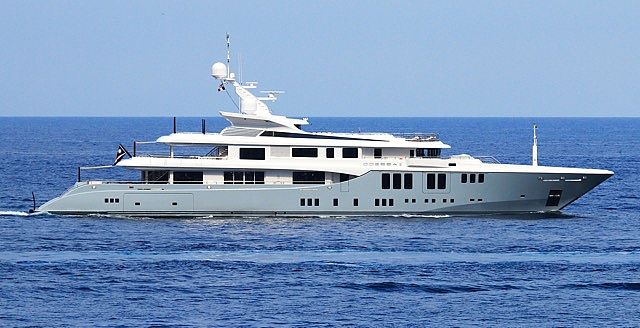
73 m / 239 ft
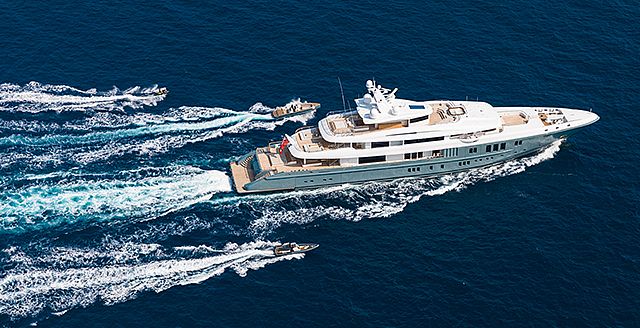
73.5 m / 241 ft
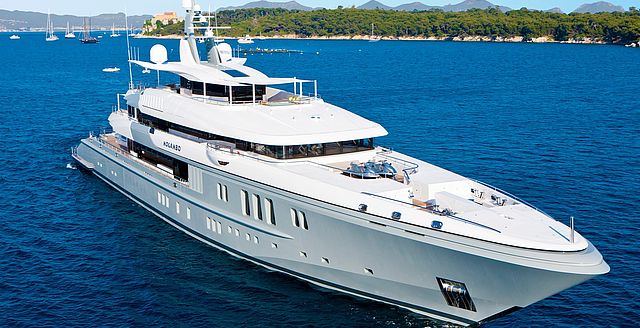
68 m / 223 ft
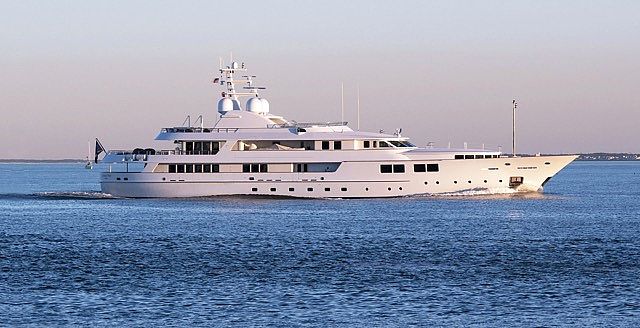
60 m / 196 ft
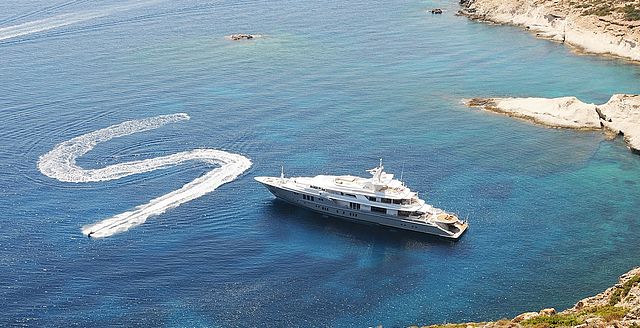
67 m / 219 ft
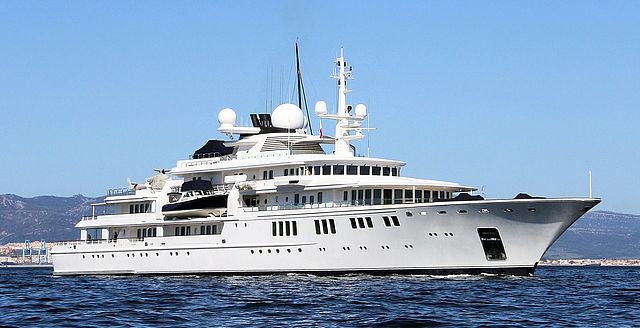
92.5 m / 303 ft

LOA: 142.81 m
Beam: 24.88 m
Draft: 8.00 m
Interior: Philippe Starck
Exterior: Philippe Starck
Hull: Steel
Superstructure: Steel / GRP
Max. speed: 21 knots
Cruising speed: 16 knots
Gross tonnage: 12.558
Project number
“Born from the desire of the owner to push the boundaries of engineering and challenge the status quo of the industry, ‘SAILING YACHT A’ is undoubtedly one of the most visionary projects NOBISKRUG has ever been involved in.”
SAILING YACHT A is the ultimate embodiment of German superyachts built for the 22 nd century.
She is unique.
She is the largest of her kind. She is a masterpiece in every detail. Her name: SAILING YACHT A. She will draw eyes the world over, as no other superyacht has ever done before.

She is sophisticated.
Measuring almost 143 m and a gross tonnage of about 12.600, she became one of the most impressive PYC superyachts in the world in terms of design and technology.
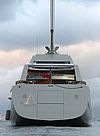
She is innovative.
She is one of the world’s largest and the most advanced superyachts with unique features such as an underwater observation pod, hybrid diesel-electric propulsion system and state-of- the-art navigation systems. The luxury sailing yacht's three masts are the tallest and most highly loaded freestanding composite structures in the world. The mainmast towers 100 m above the waterline.

The smooth, lustrous, silver-metallic surfaces…
…and nearly invisible windows give this yacht a futuristic look. World-renowned Philippe Starck created this unconventional design, which challenges the expectations of conventional aesthetics. NOBISKRUG high-tech building technology made this fascinating design possible.
Steel hull and steel superstructure with high-tech composite fashion plates that can be formed into any shape or size, a technology NOBISKRUG has developed during the past 15 years in co-operation with classification societies and special subcontractors.

Thanks to her striking looks and innovative technology SAILING YACHT A definitely changes the upcoming landscape of the NOBISKRUG fleet as well as the future of supersail.

Strictly confidential!
This is all we can tell you!
What would you like to explore next?
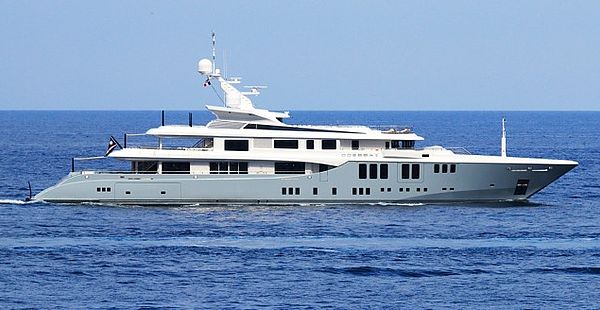
- Setting sail: A beginner's guide to sailing a yacht
Sailing a yacht, with its billowing sails and the gentle sound of water against the hull, is an enchanting experience that beckons adventurers and dreamers alike. Whether you've always been drawn to the allure of the open waters or you simply seek a new and exhilarating hobby, setting sail on a yacht is an extraordinary journey that awaits you.
The allure of sailing
There's something truly captivating about sailing on a boat, where the wind becomes your guide and the vast expanse of the ocean becomes your playground. The sense of freedom and connection with nature is unparalleled as you navigate the waters, leaving behind the noise and haste of everyday life.
Preparing to sail
Before embarking on your sailing adventure, it's essential to make necessary preparations. Learn about weather conditions, tides, and navigational charts to ensure a safe and enjoyable voyage. Familiarize yourself with the yacht's equipment, safety protocols, and communication systems.
Understanding the basics of sailing
For beginners, learning the fundamentals of sailboat handling and terminology is crucial. Discover the various parts of a sailboat, such as the mast, rigging, sails, and rudder, and understand how they work together to catch the wind and propel you forward.
Read our top notch articles on topics such as sailing, sailing tips and destinations in our Magazine.
Steer with confidence: How to sail a yacht
Mastering the art of steering a yacht is both empowering and rewarding. Learn the techniques to control the sails, adjust the angle, and harness the wind's power to navigate your vessel smoothly and efficiently.
Hoist the sails: Sailing techniques for beginners
As a novice sailor, it's essential to explore different sailing techniques. Learn how to tack and jibe, sail upwind and downwind, and handle different wind conditions. Practice basic maneuvers until they become second nature, building your confidence on the water.
Navigating the waters: Where to sail
The world's oceans and waterways offer a vast array of sailing destinations. Discover scenic coastlines, picturesque islands, and hidden coves as you plan your sailing routes. Research the best sailing locations that suit your skill level and preferences.
Yacht at sea.
Safety first: Sailing precautions and best practices
Safety should always be a top priority when sailing a yacht. Familiarize yourself with life-saving equipment, emergency procedures, and safety checks before each voyage. Understand how to respond to unexpected challenges and ensure the well-being of yourself and your crew.
Weathering the storm: Dealing with challenging conditions
Mother Nature can be unpredictable, and weather conditions can change rapidly at sea. Learn how to interpret weather forecasts and respond to adverse conditions. Having the knowledge and preparedness to navigate through challenging weather ensures a safe and successful sailing trip.
Sailing gear and equipment: The essentials for your voyage
Investing in quality sailing gear and equipment enhances your comfort and safety on board. From life jackets and harnesses to navigational tools and communication devices, having the right gear ensures a smooth and enjoyable journey.
A smooth sail: Troubleshooting and problem solving
In the world of sailing, unexpected challenges may arise. Knowing how to troubleshoot common issues, such as tangled rigging or minor equipment malfunctions, empowers you to handle situations effectively and continue your voyage with confidence.
So you want to get into sailing?
If you're drawn to the world of sailing but don't know where to begin, seek out sailing schools, clubs, and organizations that offer introductory courses and sailing experiences. Engaging with the sailing community provides invaluable guidance and support as you embark on your sailing journey.
Making sailing accessible: Sailing schools and training
Sailing schools offer structured courses led by experienced instructors, providing you with hands-on learning and a comprehensive understanding of sailing techniques. Consider enrolling in a sailing course to acquire the skills and knowledge needed to sail with confidence.
Sailing community: Building connections and finding support
Joining a sailing community opens up a world of camaraderie and shared experiences. Connect with fellow sailors, participate in sailing events and regattas, and exchange tips and stories with like-minded individuals who share your passion for the sea.
The joy of sailing: An sdventure like no other
As you set sail and immerse yourself in the world of yachting, you'll discover the true joy of sailing. The sense of accomplishment, the thrill of mastering the winds, and the breathtaking vistas of the open sea create memories that will last a lifetime.
So what are you waiting for? Take a look at our range of charter boats and head to some of our favourite sailing destinations .
Faqs about sailing.
What are the common sailing terms I should know?
Brush up on basic sailing terms like port, starboard, bow, stern, tacking, jibing, and points of sail.
Can I sail a yacht alone or do I need a crew?
While experienced sailors may sail solo, it's advisable for beginners to have a small crew for safety and assistance.
Is sailing a yacht physically demanding?
Sailing can require some physical effort, but modern yachts and equipment make it accessible to people of various fitness levels.
Better Sailing

Sailboat Vs Yacht: What is The Difference?
Many boaters use the terms “sailboat” and “yacht” interchangeably when they are actually quite distinct. A yacht is a larger boat or ship that is used for recreational purposes. The term “yacht” is of Dutch origin, and it was initially described as a small, swift sailing vessel used by the Dutch navy to track down and catch pirates. A boat, on the other hand, is a smaller vessel that can range from a fishing boat to a sailboat in size. So, if you’re interested in this topic, this article will compare yachting with sailing in many ways. Like this, you will have a much better understanding of which option is best for you. Keep reading!
Sailboats and Yachts: Meaning
Firstly, it’s important to understand the meaning of each word. Generally, a boat is a form of watercraft that comes in a variety of shapes and sizes. A boat is a watercraft that is small enough to fit on a ship, which is typically less than 1,000 feet long. A ship is a huge vessel with a large carrying capacity that can transport other vessels. The size, shape, and capacity of a boat vary depending on its intended usage. Boats are most commonly employed for navigating places along the water’s edge or inland waterways like lakes and rivers, although they can be utilized on any water source. Boats can be used for a variety of purposes, including providing service to people and vessels on the water, recreational activities, commercial passenger, and cargo transportation across waterways.
So, a sailboat (sailing vessel) is a boat that is propelled primarily by the force of the wind on sails. Keep in mind that the term “boat” can cause some misconceptions about the vessel’s size. People may refer to it as a sailing ship rather than a sailing boat once it reaches a particular size. Also, boats are generally thought to be smaller than ships. A sailboat is a water-borne watercraft whose principal means of propulsion is the wind, which is captured and controlled by triangular-shaped pieces of cloth known as ‘sails.’ On the other hand, a powerboat is a watercraft with an internal combustion engine as its primary source of propulsion.
A yacht is most likely a vessel that is primarily used for personal rather than business purposes. There are yachts that you can hire for a week or more. This might add a little confusion as they are commercially owned but within the hire period, they are used by individuals for leisure purposes. Generally, people usually refer to sailboats as yachts or vice-versa. This is a common phenomenon nowadays, however, there are significantly more sailing yachts than motor yachts at the seaside/marina. If you want to specify a boat that is not largely powered by the wind, use the word motor yacht.
Sailing yachts and motor-powered yachts are the two forms of yachts available today. Yachts range in length from 26 feet to hundreds of feet. A cabin cruiser, or just a cruiser, is a luxury vessel that is less than 39 feet long. A superyacht is typically above 70 feet long. So, what is the definition of a mega yacht? They usually exceed 150 feet in length, but there is no top limit! Note that the world’s largest boat is 728 feet long, or 222 meters.
Let’s now check the main differences between a sailboat and a yacht:
Sails and Motor
The boat may be powered purely by the wind or by one or more inboard or outboard motors, depending on the model. While some larger boats may have very massive engines to provide genuine speed on the water, most yacht engines are far less powerful. Yacht engines are substantially larger, can produce far more power – up to 800hp in some circumstances – and can go many further distances.
If you’re searching for a vessel that’s easier to operate, you could argue that a yacht is a superior option. Sure, the computer components are more complicated, and there is more to manage, but sailing will be simpler. In stormy weather, managing a sail can be tricky. From inside the cabin, you can’t manage your sails. You may, however, operate your yacht from the cabin.
It’s a fact that sailboats will always have sails. After all, it’s their primary source of propulsion. The nail is what propels the boat forward by harnessing the wind. So long as the weather permits, sailing can be done anywhere, at any time. Yachting, on the other hand, has its own set of restrictions. A yacht will usually lack a sail, which can be viewed as a good or negative aspect, depending on your perspective.
The advantage of having a sail over only an engine is that you don’t have to worry about running out of fuel. Fuel is not only costly but also inconvenient and pollutes the environment. When on long voyages, you must always keep an eye on your fuel levels, or you risk breaking down at sea. The great thing with sailboats is that as long as there is wind, a sailboat can sail. If you have an extra sail onboard, you should be alright regardless of what occurs. You have a significantly lower chance of being left stranded at sea.
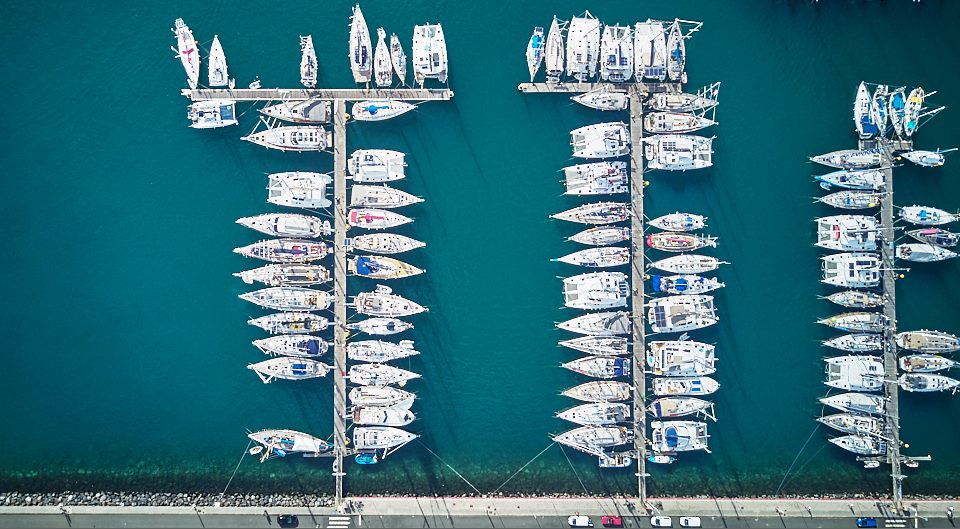
>>Also Read: Sailboats Vs Powerboats: Why Sailboats are Better
Size Matters
The size difference between a yacht and a sailboat is one of the most significant ones. Most of the time, a sailboat will almost certainly be smaller than a yacht. Of course, some sailboats are larger than others, but if we’re talking about average sizes, a yacht will be larger. The reason that size counts so much when deciding which boat to buy is that the available space is limited. So, if you opt for space note that the larger your boat is, the more space you’ll have. This may seem self-evident, but it is one of the most crucial aspects of your boat to which many people forget to give due consideration.
Generally, when it comes to boats, size will always matter. Except in cases where someone prefers overall better performance and speed. But, keep in mind that almost everything you do will be influenced by the size of your boat. The smaller the boat, the less storage space you have, the less space you have for emergency supplies, and even the less space you have for yourself. Regardless of the size of your boat, your sleeping quarters will most certainly be small. Also, depending on your height, every inch of a room may be crucial.
When there are more people on your boat than just you, size matters the most. If you intend to live alone on your yacht, you will have a significant space advantage. If there are three persons on board, you probably going to need more equipment and devices for cooking or for emergencies. All of this suggests that the sleeping space is the most significant distinction between living alone and living with people. If you live alone on a yacht that can sleep four people in theory, you will have a lot more storage and consequently space.
People on Board
The extent to which the crew will influence your decision is mostly determined by your budget and the size of the vessel you are considering buying. Meaning that if you’re intending to buy a sailboat, you won’t need any crew. Except for your family/friends that live on your boat with you, you basically are the entire crew. However, if you own a yacht, it’s an entirely different scenario.
If you intend to live aboard your yacht, you may require the assistance of one or two crew members. There will be plenty to do even if you are the most essential member of the team, i.e. the captain. This is because you might haven’t already mastered things like navigation, maintenance, plumbing, and engineering. So, a yacht often requires a complete crew to assist with navigation, maintenance, electronics and engineering, repairs, and sometimes even stewards to attend to the passengers.
In other words, having a sailboat means that you can take care of everything yourself. There are only a few computer components that will need to be repaired, and you are unlikely to have an engine. Repairing a sailboat isn’t easy in and of itself; it’s just easier for one person to handle. Meaning that it’s far easier to replace a sail than it is to fix an engine. In bad weather, a small sailboat is just easier to monitor than a large yacht. At the absolute least, another set of eyes will be probably required when sailing with a yacht.
Price also Matters
In general, yachts tend to be more expensive than sailboats. Occasionally, a great deal more. For a variety of factors, the most important of which are materials, design, and construction techniques. Note also that a boat’s price is likely to rise as it becomes more modern. Although this isn’t always the case, it is the vast majority of the time. If money is a key factor in deciding which boat to buy, here’s something to think about: just because a yacht is more expensive doesn’t mean you shouldn’t have one. If you have the cash, knowledge, and you know the kind of sailing you will be doing then go for a yacht!
Note also that a sailboat can be outfitted with a variety of amenities and conveniences. But, the sailboat doesn’t always include these features. This will mostly depend on the type of sailboat. As a result, buying a basic sailboat can save you a lot of money. However, most yachts will provide high end amenities. As a result, a motor yacht will cost significantly more than a regular sailboat. Sailboats are also smaller than yachts, which means you have a larger selection of less expensive boats to pick from when making your purchase. But, yachts often start in the six-figure range and can reach millions of dollars depending on the yacht’s size, age, and build quality.
Maintenance and Repairs
Yachts are frequently more expensive to maintain than sailboats. Meaning that boat engines require a great deal of upkeep, and the expense of fuel can be prohibitive for many individuals. For example, did you know that a gallon of diesel fuel in a yacht may only allow you to travel less than 1 nautical mile? If you’re going on a long voyage out to the sea, you can end up spending a lot of money on fuel. A sailboat, on the other hand, can take you wherever you want to go with very little fuel. Bear in mind also that a yacht’s insurance is more expensive than that of a sailboat. One of the main reasons is because it is classified as a yacht.
In addition to the boat’s price there are some other things to consider. The most important one is maintenance and repairs. A boat will always need these and it might need them once per month or once per year. It depends on the kind of repairs and on the way in which you “treat” your boat. Also, if you’re buying a used sailboat, you will need sometimes more research and more money for upgrades. It will be repainted, restored, and upgraded, although it will remain the same size. You should approach buying a boat in the same way that you would with a car. So, according to the size and kind of boat you want to buy, it’s important to keep in mind the price and extra costs as well.
While advanced marine electronics and navigation systems are available on some boats, they are more of a must for yachts. When doing transatlantic voyages, it is critical not only to be able to navigate with precision but also to be able to identify other boats or objects that you may not be able to see, as well as to comprehend your vessel’s performance.
When it comes to technology, it’s not just about whether you’re choosing a sailboat or a yacht. The age of the specific vessel is also something to consider. A sailboat that is more than ten years old may not be as technologically advanced as a brand new sailboat. Better technology can offer a lot of opportunities for you if you decide to buy a yacht. First and foremost, it can make working on your boat much more convenient. There’s no reason you couldn’t work remotely from your boat if you have the ability to set up a functional office with wifi.
Technology also brings up a lot of new possibilities for you when it comes to the act of sailing. A sailboat could traverse the Pacific or Atlantic, but it would be rather difficult. On the other hand, with a yacht, it can be a lot easier. In comparison to a sailboat, your yacht will have advanced navigational systems, warning and guidance systems, and many more safety features.
Sea, Lakes, or Rivers?
Bear in mind that in shallow waters, large yachts are unable to sail. A sailboat is a way to go if you plan on sailing in areas with shallow waters. In the Caribbean, for example, a yacht might be difficult to navigate. At the very least, it’ll be more difficult than sailing. A yacht, on the other hand, may travel to far more places than a sailboat.
A small sailboat might theoretically sail across the Atlantic. However, it can be quite risky, and your boat might not be able to withstand the strong winds and waves. Furthermore, if you’re aboard a sailboat, you can be the only one on board. This means that if the worst happens, far out at sea, there will be no one to aid you. You can do it, of course, but it is risky.
So, smaller boats may normally operate in calmer seas such as lakes, rivers, and shallow harbors. Larger boats, usually between 20 and 30 feet long, can equally navigate rougher ocean seas. A yacht, on the other hand, can sail in deeper ocean waters and handle more choppy seas. Yachts are significantly more ideal for lengthy ocean voyages due to their bigger size, high-tech electronics and guidance equipment, weather protection, and a variety of other characteristics.

>>Also Read: Sailing Vs Boating: Why Sailing Is Better
Sailboat and Yatch Construction
Depending on the anticipated scale of production, sailboat makers can fabricate their own parts or order them. Masts, sails, engines, and metal fittings are common items provided by specialty vendors. Boatbuilders, on the other hand, create their own fiberglass hulls, using Gel coat polyester resin, a catalyst for the resin, woven fiberglass roving, and fiberglass. Wooden hull manufacturers create and shape their own wood in the same way. Note that the main building materials used in boat construction are aluminum, metal, wood, and fiberglass. The unique structure of each material offers a different design and usage as well as additional features to the way in which the boat is built.
Material considerations are important, whether they affect the cost or the durability of the product. Fiberglass, carbon fiber, and metals such as titanium will also be used to construct a boat. On the contrary, a sailboat will most likely be composed of wood or fiberglass. So, in case you value safety and sturdiness above all else, and money isn’t a big issue, a yacht will be significantly safer for you.
The material can also influence the way in which you make repairs. For instance, a wooden boat is much easier to repair than a metal boat. You can make some simple and quick repairs using wood, and they’ll probably last till you get to a marina. To do major repairs on a yacht, you’ll need a lot of specialized equipment and knowledge. Moreover, you may need to ask for a crew member to help you with this.
Sailboat Vs Yacht – Summary
As you can see there are many differences between a sailboat and a yacht. Nowadays many people tend to confuse or don’t be aware of the exact meaning and differences of these vessels, and it’s normal. But, we, as sailors, have to know the differences in order to understand which kind of boat is right for us. For example, if you want big spaces, luxury, or intend to liveaboard then you should opt for a yacht. But, if you want to experience the true joy of sailing, sail anywhere without worrying about polluting the environment or spending too much on fuel, then go for a sailboat! It will entirely depend on your needs and preferences so weigh the pros and cons of each one before making the decision.
In any case, I hope that you have now clarified the differences between these two and that you will make the right choice. I wish you all safe & enjoyable voyages!
Peter is the editor of Better Sailing. He has sailed for countless hours and has maintained his own boats and sailboats for years. After years of trial and error, he decided to start this website to share the knowledge.
Related Posts

Atlantic vs Pacific: Which is More Dangerous for Sailing?

The Ultimate Guide to Choosing the Best Fishing Line for Trolling

Lagoon Catamaran Review: Are Lagoon Catamarans Good?

Best Inboard Boat Engine Brands
- Buyer's Guide
- Destinations
- Maintenance
- Sailing Info
Hit enter to search or ESC to close.
- Search Please fill out this field.
- Newsletters
- Water Sports
A Beginner's Guide to Sailing a Sailboat
Key Information for Beginners and Sailors
There are many ways to learn to sail:
- You can just jump in a boat with a friend and try to learn from experience
- You can sign up for a formal course at a sailing school
- You can buy or borrow a small sailboat and do it all on your own
No matter which way works best for you, it helps to understand the boat and what's involved in sailing first before you're out on the water, where suddenly you might get into trouble.
The Basic Steps of Sailing
Sailing involves both specific knowledge and skills. The following are the basic steps of learning to sail- as much as you can learn while not actually on a boat. You don't have to follow this order; skip ahead if you already know some of the basics. If you're mostly new to sailing, you might want to proceed through these steps like chapters in a manual.
- Understand Basic Sailing Terms. To get into sailing, you have to understand the words that are used to talk about the sailboat and the skills used to sail. Start here with a review of basic sailing terms. Don't worry about memorizing everything as many of these terms and concepts will become clearer as you read on about how to do it.
- Learn the Parts of the Boat. Before you go on the boat, it's helpful to know the words used in different parts of the boat. Even if you have an instructor, he or she won't say "Grab that rope over there and pull it," but instead will say "Haul in the jib sheet!" Review the basic boat terms you'll need to know.
- Start an Online Course. Now you're ready to learn more about what all those parts of the boat are used for. Here you can start an online learn-to-sail course by learning more about the parts of the boat along with a lot of photos, so you'll see what to do.
- Rig the Boat. Read to go sailing now? Hold it a minute- you have to rig the boat first by putting on sails and making other preparations. Here again are a lot of photos of what to do on a typical small sailboat used by beginners.
- Review Basic Sailing Techniques. OK, now you have the boat ready- so what do you do now to make it go? Manage the sails to go in the direction you want by learning basic sailing techniques.
- Discover How to Maneuver. Sailing in a set direction is reasonably easy, but eventually, you'll have to change direction. That often involves tacking and gybing. Take a moment to learn what's involved in these critical maneuvers.
- Recover From a Capsize. Now you've got the basics down. But did anyone ever tell you that small sailboats often tip over if the wind is gusting? Be prepared and carefully see how to recover from a capsize .
- Dock or Anchor the Boat. Now you're out there sailing and you've got the boat under control. Learn how to go faster, dock or anchor the boat and use some of the equipment you've ignored so far. Take a look at some of these additional sailing skills.
- Practice Tying Knots. For thousands of years, sailors have used times where it is cold or raining by doing things like tying knots. Knots are important on a sailboat and you will need to learn at least some basic sailing knots to sail at all.
- Sail Safely. At this point, plus practice on the water, you're good to go. However, it's good to remember that water is a dangerous place. Learn the basics about sailing safety. Staying safe makes it easier to keep having fun out there.
Related Articles
More related articles.
18-year-old killed after being struck by boat propeller in Harvey Cedars NJ accident
HARVEY CEDARS - An 18-year-old was killed Sunday afternoon after being struck by a boat's propeller, according to authorities.
Police said that Zeina Mahafzah of Wayne was on a raft being pulled by a boat. While the 18-year-old was attempting to board the vessel, she was struck by the boat’s propeller and sustained fatal injuries, police said.
Harvey Cedars police have said the death was due to a “tragic boating accident.”
The accident occurred at 4:30 p.m. Sunday in the water off Sunset Park in Harvey Cedars Boro, according to State Police, who are heading the investigation.
Fatal accident: ‘Tragic boating accident’ off Long Beach Island claims teen girl
The incident remains under investigation, and no additional information is available at this time, according to state police.
Jenna Calderón covers breaking news and cold cases in Monmouth and Ocean counties. Before coming to the Press, she covered The Queen City for Cincinnati Magazine in Ohio. Contact her at 330-590-3903; [email protected]
Screen Rant
The fate of below deck sailing yacht after season 5 isn't promising (the show's reputation is damaged).

Your changes have been saved
Email is sent
Email has already been sent
Please verify your email address.
You’ve reached your account maximum for followed topics.
20 Best Reality TV Shows Right Now
Below deck sailing yacht should be on damage control (did gary king ruin the show's reputation), love is blind uk: are benaiah and nicole still together.
- Gary's sexual misconduct scandal has permanently tarnished Below Deck Sailing Yacht.
- Bravo must remove Gary from future seasons for the show to regain its reputation.
- Season 5 may be in danger of cancellation due to Gary's scandal.
Below Deck Sailing Yacht season 5 is highly anticipated, but its fate isn't promising after Gary King 's sexual misconduct scandal was revealed. Captain Glenn Shephard leads the cast of the exciting spin-off aboard the Parsifal III, with Gary, Colin Macrae, and Daisy Kelliher's love triangle as the pinnacle of season 4's drama. However, after Gary's sexual misconduct allegations were revealed and later brushed under the rug by Bravo producers, the popular franchise staple could be in danger. Will Below Deck Sailing Yacht season 5 return?
During Below Deck Sailing Yacht filming in the summer of 2022, makeup artist Samantha Suarez escorted cast members back and forth for confessional interviews, including Gary. After a talking head in which Gary was visibly intoxicated, Samantha walked him back to his quarters, at which time Gary prevented her from leaving, even grabbing her from behind. While Bravo issued a statement, the allegations were barely addressed, and Gary still allegedly filmed Below Deck Sailing Yacht season 5.
Reality TV is more popular than ever. With so many to choose from, here are some of the best reality TV shows to stream or watch right now.
Gary King's Misconduct Scandal Has Put A Permanent Negative Stain On BDSY
Gary needs to go.
Gary's sexual misconduct scandal has put a permanent stain on Below Deck Sailing Yacht . He's openly struggled with professionalism and alcohol on the show for years. Additionally, this isn't the first time alcohol has gotten Gary in trouble with sexual harassment. While Daisy came to his defense, his love triangle with Daisy and Colin was also problematic, with Gary becoming distracted by the Below Deck drama. By casting Gary in Below Deck Sailing Yacht season 5, Bravo indicated that sexual misconduct wasn't taken seriously by the network .
Below Deck Sailing Yacht Season 5 Needs To Bring It For Bravo To Order Another Season
The series is in trouble.
Below Deck Sailing Yacht season 5 has allegedly already been filmed, with rumors swirling that Gary's scandal has halted its release. Given his prominence in the series, it would be difficult to edit Gary out of the show or even reduce his role. Therefore, it would be better for Bravo to scrap the current season entirely and film a new charter season for Below Deck Sailing Yacht season 5 .
It's the responsibility of Bravo producers to ensure the safety of the cast and crew during filming, and Samantha wasn't adequately protected from Gary's advances.
The cast and crew would need to bring it to revitalize the spin-off, or it's going to get canceled. Below Deck , Below Deck Mediterranean , and Below Deck Down Under are successful enough to continue without Below Deck Sailing Yacht . The popular cast members could go to another Below Deck series.
What Can Below Deck Sailing Yacht Producers Do To Fix The Show's Reputation?
They need to get rid of gary.
Below Deck Sailing Yacht is a sinking ship , but not all hope is lost. Bravo producers have already shown their understanding of the seriousness of Gary's sexual misconduct by disinviting him to BravoCon in 2023. However, they need to further distance themselves from Gary and fire him from future seasons. If it's impossible to decrease his presence in Below Deck Sailing Yacht season 5, the season needs to be scrapped. Only then can Below Deck Sailing Yacht return in good faith and conscience for another installment.
Below Deck Sailing Yacht is available to stream on Peacock.
Below Deck Sailing Yacht
Not available
Below Deck Sailing Yacht is a spin-off of the Below Deck reality television series. Premiering on Bravo, the show follows the life of a Yacht crew as they attempt to navigate a busy Charter season in which many customers make use of a 177-foot sailing yacht. Over the first three seasons, the yacht has been to Greece, Croatia, and Spain.

My Cruiser Life Magazine
Yacht vs Sailboat – A Definitive Guide
What exactly is a yacht, anyway? Does it have to be a motor boat? But what about large sailing yachts?
The term is confusing because it is used differently in different places. Sometimes, it’s a term only reserved for large motor yachts with multiple crew member teams.
Here is a look at my observations. You might find that the lines are different in your harbor, but this article should get you started.
Table of Contents
- Sailboat vs Yacht – What’s the Difference?
Six Things that Make It a Yacht
So what’s a yachtie, then, sailing yacht vs motor yacht, types of yacht — what makes it a megayacht, modern yachts, classic designs.
- What about Yacht Racing?
Sailing Yachts or Motor Yachts
Faqs – motor and sailing yachts vs sailboats.
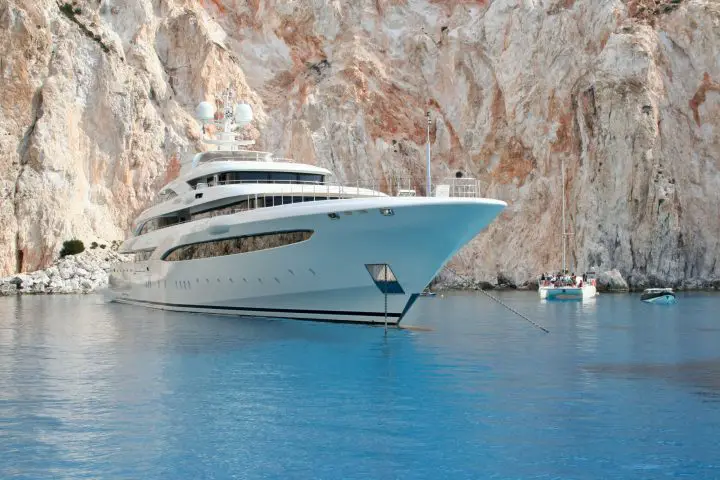
Sailboat vs Yacht – What’s the Difference?
Before diving in, it should be noted that there is some regional variation at play. For example, American and British sailors use the word yacht very differently.
First, the American definitions. From the Merriam-Webster dictionary, here are how sailboats compare to yachts.
Sailboat – A boat usually propelled by sail sailboat Boat – A small vessel for travel on water Yacht – Any of various recreational watercraft, such as a) a sailboat used for racing, or b) a large usually motor-driven craft used for pleasure cruising Merriam-Webster Dictonary
So right away, we can see a few trends that play out in the real world. For one, any term with the word “boat” is inherently generic. It could be a fishing boat, a work boat, or a pleasure boat. Likewise, it could be a sailboat or a motorboat.
On the other hand, a yacht is a special kind of boat. It is always for recreational and not commercial use. Sometimes it’s a sailboat used for racing, and sometimes a motorboat used for cruising.
From my personal experience on the water, I don’t disagree with this definition, but it leaves out a lot of nuances.
Across the Pond, the use of the word yacht is slightly different. In British usage, the words “yacht” and “sailboat” are used more or less interchangeably, with more sailors tending toward the word yacht. Here’s the definition according to the Cambridge English Dictionary.
Yacht – a boat with sails and sometimes an engine, used for either racing or traveling on for pleasure Cambridge English Dictionary
This sounds like the definition of a sailboat by US usage to my ear. But this is precisely how many Brits I have met in my travels refer to their boats—er, yachts.
Besides the dictionary definitions, we could look at how the term is used in the publishing world. For example, one of the most popular UK-based magazines is Yachting World . The magazine covers cruising boats, global sailing destinations, around the world races, and general sailing techniques. Its nearest US competitor is called Cruising World.

As a boater in South Florida, I became more aware of the differences between a boat and a yacht. You cannot navigate the waters between Fort Lauderdale, Palm Beach, and Miami for long without noticing a few other things that will qualify you as a yacht.
1. Yachts are nearly always operated by a professional crew who act as hosts for the owners and guests. There’s always a captain and chef, and usually stewards and deck hands too.
2. Yachts are flashy—they look expensive, and they are expensive. They shine, they’re always washed, and their wood and stainless glisten with perfection. After all, they have a full-time crew to tend to all of that.
3. While motor yachts are more common, there are plenty of beautiful sailing yachts on the water as well.
4. Yachts tend to be big. They need to be big enough for guests and crew to be comfortable. Plus, many are owned by business owners who use them to entertain.
5. Yachts spend much of their time with no guests/owners on board. Instead, the crew moves the yacht from one place to another, and the owner flies in to enjoy a few days a month onboard.
6. Many yachts are available for charter. While one person might own it and use it, they don’t spend all their time onboard. So when it’s still idle, it and its crew are leased out for days/weeks/months at a time.
Even within the subset of the motor yachts, there is significant variation and room for definition. To illustrate, some boats are designed to be sleek and modern, with the stately look of a yacht.
The term yachtie is commonly heard in port cities around the world as a person who gets off a yacht. Initially, this term was used only for wealthy owners or their guests. However, if you’re in a place where “yacht” means smaller boats, then any sailboat owner could be called a “yachtie.”
Nowadays, though, the term yachtie also could refer to the crew. Bravo TV’s Below Decks reality series focuses on the adventures and misadventures of the crews on these sorts of yachts.
More often than not, yachts are motorboats. But they aren’t just any motorboat. They are often sleek and fast ones that look like they just blasted out of the newest James Bond film.
There are also plenty of other styles of yacht on the ocean. Yachts take many shapes and forms since the best naval architects design them to suit whatever their clients want to do.
For example, some yacht owners use their boats to explore the Seven Seas. To do this, they might commission a custom expedition yacht or convert an old research vessel, fishing boat, or tugboat. These vessels are great for getting off the beaten track and taking any long trip.
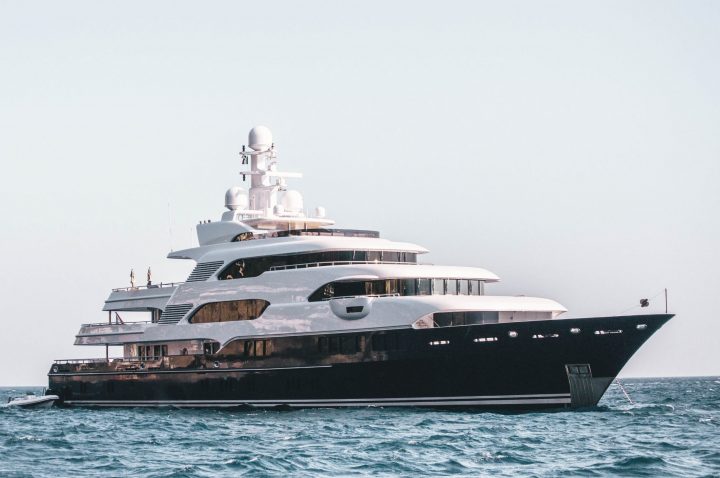
And similarly, some yacht owners want to sail. Some enjoy sailing for sailing’s sake, and others want their floating mansions to produce a smaller environmental impact by cutting down on their use of fossil fuels.
There are classic sailboat superyachts, like the three-masted schooner EOS . The EOS is the second-largest pure sailing yacht in the world at 305 feet (95 meters) long. She was launched in 2007 and is owned by movie billionaire Barry Diller and his wife, fashion designer Diane von Fürstenberg.
But you can’t compare the motor yacht vs sailing yacht without mentioning some of the other ultra-modern takes on the classic sailboat. The Maltese Falcon is a well-known sailing superyacht with three masts. But unlike the conventional schooner rig found on the EOS, the 288-foot (88-meter) Maltese Falcon has DynaRig technology . It looks like a square-rigger from the 1800s, but the masts can rotate, allowing it to sail upwind.
And for those who are still pondering sailing vs motor yacht design, you can’t miss Sailing Yacht A . Sailing Yacht A is sometimes noted as the largest sailing yacht in the world, but due to its unusual design, it is actually a “sail-assisted yacht.” In other words, this boat has sails, but it needs to run the motor to make way—the sails only help the motors.
How Big Is a Yacht?
With varying meanings worldwide, no single definition for the word yacht exists. Many brokers and charter companies loosely define a yacht as being at least 80 feet (24 meters) long.
In an industry where the lowest entry-level model needs to be big, luxurious, and fancy—how do different naval architects and boat makers differentiate themselves? In other words, how can a yacht be more than just a yacht?
The answer, of course, is to be a SUPER or a MEGA yacht. There’s no agreed-upon definition of what precisely these terms entail, but make no mistake–it takes a big yacht.
Worth Avenue Yachts, a global yacht broker and charter specialist company, postulates that a superyacht is at least 78 feet long (24 meters).
Furthermore, mega yachts are even grander. They start around the 200-foot (60-meter) line and keep getting bigger from there. The largest megayacht in the world is the 592-foot (180-meter) AZZAM . AZZAM was launched by Lürssen Yachts in 2013 was built for the President of the United Arab Emirates.
Yacht Aesthetics
So we’ve touched on the fact that yachts are usually pretty big, and in some cases really, really big. But there’s another thing that sets them apart from the typical sailboat, too. Yachts look different.
Generally, there are two aesthetics or looks that yachts take on, forming something of a motor yacht debate. Of course, this isn’t an inclusive list. Many designers work to make a statement with their yachts. The look of the finished vessel is a statement and an advertisement for the builder.
There are many yachts built that are designed right from the drawing board to turn heads. The most common way they do this is by making them modern and sleek, even futuristic at times.
Designers and builders put the latest technologies into yachts to appeal to early adopters of new technologies. What CEO or celebrity doesn’t want to own the world’s fastest yacht ?
And then there are futuristic-looking ones with forward-thinking designs. Boat International collected some of the craziest-looking yachts that are worth a look.
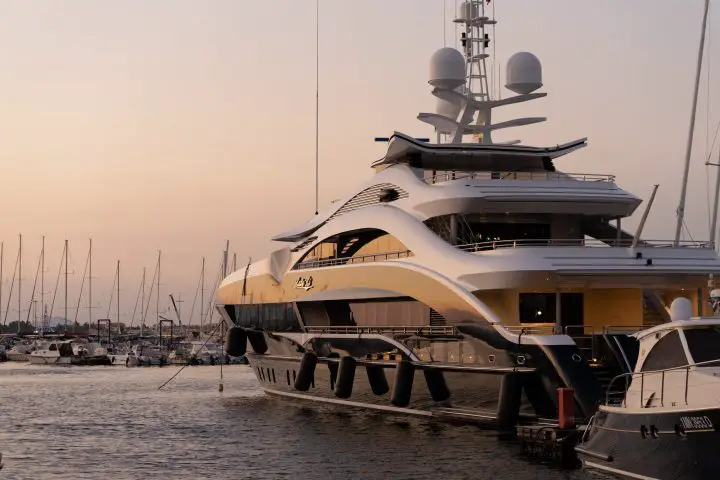
The yachts above get their title as yachts thanks to their value and size. But there’s another classification that you should consider—those yachts that get their name for their air of traditionalism.
Perhaps they are well-cared for or restored wooden hulled yachts from the 1920s or 30s. Many of these classics are sailing yachts , but that isn’t always the case.
In some cases, they are modern fiberglass or metal-hulled boats built recently and designed by contemporary designers. But their owners wanted that classic yacht aesthetic, so they created something that appears older than it is. Here’s a look at some of the nicest classic yachts out there.
What about Yacht Racing?
The older, more traditional British use of the word yacht seeps into everyday American English in a few places.
They’re more common on the international stage, so beyond the everyday use of yacht terms in the US, these particular uses harness a more global view of the word.
One such example is in the term yacht racing. Yacht racing sounds fancy, and it usually is, but it is entirely about sailboats. Yacht racing is usually done at a yacht club, another term that focuses on an older use of the word.
In the heydays of the yacht club, the line between the sort of crewed megayachts you see today and the person sailboat was blurrier. Fewer people had boats, and those boats that the wealthy could afford were divided between large crewed vessels and those small private boats kept at clubs. And, of course, one of the favorite activities at the yacht clubs was yacht racing.
Yacht clubs are still a thing, but they are less a part of everyday boating in the US than they used to be. Yacht clubs range from a local, passionate small boat sailing community to exclusive, elite social clubs with little to do with yachts.
Yacht racing is an international sport, although even the Olympics refer to it now as “sailing.” The oldest trophy in sports is the America’s Cup , and the competition for it is the pinnacle event in yacht racing.

So how do you tell a yacht from other boats? It depends on several factors, but unlike a lot of things in boating, there really isn’t a right or wrong answer. If you want to call your new 20-foot pontoon a yacht or even a ship, go right ahead. However you want to enjoy life, the weather, sun, wind, or adventure, only one thing is for sure. Owning a boat makes it better!
To learn more about other boats and their comparisons, check out: Catamaran vs Pontoon
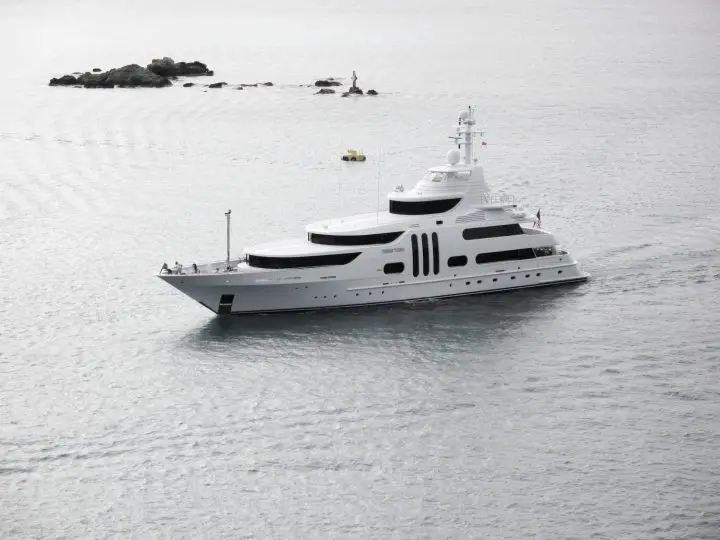
At what point does a sailboat become a yacht?
There is no definitive line where a sailing boat can be called a yacht. To some extent, you can use the word sailboat to describe any private, recreational sailing vessel. This is how the word is used in many parts of the world.
In the United States, the word yacht is usually reserved for crewed luxury vessels. To count as a yacht by this definition, the boat would need to be very high-end, sleek, and expensive. In short, it’s probably not a yacht if it’s under about 80 feet or so.

Are yachts or sailboats more expensive?
Yachts are more expensive, but it’s all in the definition of the word. In the US, the understood definition of a yacht is a luxurious sailboat or motor yacht. More often than not, yachts are big enough to require a professional crew.
On the other hand, a sailboat is any vessel that uses sails for power. So a yacht could be a sailboat, but not all sailboats are yachts. By the US definition, most sailboats are small and far from the lavish luxury you’d find on a yacht. But in some parts of the world, “yacht” is used interchangeably for a sailboat of any value.
Is a 40 foot sailboat a yacht?
The answer depends on where you are from. In parts of the world heavily influenced by British English tradition, the word yacht is often interchangeable with sailboat. If this sounds right, then a 40-foot sailboat could definitely be a yacht.
But in the US, the word yacht is usually reserved for large, lavish, and expensive vessels with professional crews—the types owned by celebrities and the super-wealthy. If this sounds more like your neighborhood, chances are a 40-foot sailboat is just a sailboat. On the other hand, if it doubles or triples in size and gets a crew, it might be bordering on yacht territory.
Is a sailing yacht cheaper than a yacht?
In general, the purchase price of yachts are roughly equal. While sailboats have more rigging and equipment, motor yachts have larger engines, so the prices are closer than you might imagine. There are too many variables to generalize when it comes to operating costs. In general, though, a fast-moving powerboat will always cost more than a slow-moving sailboat due simply to fuel costs.
If you’re thinking about chartering and want to compare the prices of sail versus power, companies like The Moorings Charters allow you to browse various destinations and boats. For example, a one-week charter on a 42-foot sail catamaran in the BVI starts at around $9,400. For comparison, that same charter on their smallest power catamaran, a 43 footer, starts at $11,070.
Matt has been boating around Florida for over 25 years in everything from small powerboats to large cruising catamarans. He currently lives aboard a 38-foot Cabo Rico sailboat with his wife Lucy and adventure dog Chelsea. Together, they cruise between winters in The Bahamas and summers in the Chesapeake Bay.

The global authority in superyachting
- NEWSLETTERS
- Yachts Home
- The Superyacht Directory
- Yacht Reports
- Brokerage News
- The largest yachts in the world
- The Register
- Yacht Advice
- Yacht Design
- 12m to 24m yachts
- Monaco Yacht Show
- Builder Directory
- Designer Directory
- Interior Design Directory
- Naval Architect Directory
- Yachts for sale home
- Motor yachts
- Sailing yachts
- Explorer yachts
- Classic yachts
- Sale Broker Directory
- Charter Home
- Yachts for Charter
- Charter Destinations
- Charter Broker Directory
- Destinations Home
- Mediterranean
- South Pacific
- Rest of the World
- Boat Life Home
- Owners' Experiences
- Conservation and Philanthropy
- Interiors Suppliers
- Owners' Club
- Captains' Club
- BOAT Showcase
- Boat Presents
- Events Home
- World Superyacht Awards
- Superyacht Design Festival
- Design and Innovation Awards
- Young Designer of the Year Award
- Artistry and Craft Awards
- Explorer Yachts Summit
- Ocean Talks
- The Ocean Awards
- BOAT Connect
- Between the bays
- Golf Invitational
- BOATPro Home
- Superyacht Insight
- Global Order Book
- Premium Content
- Product Features
- Testimonials
- Pricing Plan
- Tenders & Equipment
Yachts for Sale
For aspiring yacht owners looking for a luxury yacht for sale, we have put together a fine selection of luxury yachts and megayachts for sale from all over the world. Search BOAT International's collection of superyachts for sale and filter by type, length, asking price or age. Narrow the results by selecting specific features, or browse by speed, designer and much more.
Explore luxury yachts for sale
Search for everything from motor yachts for sale from renowned Dutch yards including Feadship and Heesen , premium Italian names including Azimut , Sanlorenzo and Benetti , popular British builders Sunseeker and Princess , and American megayachts for sale from US yards such as Westport .
Our collection also features sailing yachts for sale from legendary names such as Royal Huisman , Perini Navi , Nautor's Swan and Jongert , as well as some of the most well-known explorer yachts for sale .
Yacht Features
Propulsion System
- PRO Courses Guides New Tech Help Pro Expert Videos About wikiHow Pro Upgrade Sign In
- EDIT Edit this Article
- EXPLORE Tech Help Pro About Us Random Article Quizzes Request a New Article Community Dashboard This Or That Game Happiness Hub Popular Categories Arts and Entertainment Artwork Books Movies Computers and Electronics Computers Phone Skills Technology Hacks Health Men's Health Mental Health Women's Health Relationships Dating Love Relationship Issues Hobbies and Crafts Crafts Drawing Games Education & Communication Communication Skills Personal Development Studying Personal Care and Style Fashion Hair Care Personal Hygiene Youth Personal Care School Stuff Dating All Categories Arts and Entertainment Finance and Business Home and Garden Relationship Quizzes Cars & Other Vehicles Food and Entertaining Personal Care and Style Sports and Fitness Computers and Electronics Health Pets and Animals Travel Education & Communication Hobbies and Crafts Philosophy and Religion Work World Family Life Holidays and Traditions Relationships Youth
- Browse Articles
- Learn Something New
- Quizzes Hot
- Happiness Hub
- This Or That Game
- Train Your Brain
- Explore More
- Support wikiHow
- About wikiHow
- Log in / Sign up
- Cars & Other Vehicles
How to Sail a Boat
Last Updated: May 13, 2022 Approved
This article was co-authored by Nitzan Levy . Captain Nitzan Levy is a Sailor, Social Entrepreneur, and the Founder of Sailors NYC, a recreational sailors’ club based in Jersey City, New Jersey that specializes in cruising boats and a variety of community programs. Capt. Levy has over 20 years of sailing experience and has sailed in many places around the world including: the Atlantic Ocean, the Mediterranean Sea, The Caribbean, and the Indian Ocean. Capt. Levy is a U.S. Coast Guard Licensed Master of vessels up to 50 Tons with Auxiliary Sail and Assistance Towing Endorsements. Capt. Levy is also a NauticEd Level V Captain Rank Chief Instructor, an American National Standards Assessor, an SLC instructor, an ASA (American Sailing Association) Certified Instructor Bareboat Chartering, and an Israeli licensed skipper on Boats for International Voyages. There are 9 references cited in this article, which can be found at the bottom of the page. wikiHow marks an article as reader-approved once it receives enough positive feedback. This article received 25 testimonials and 92% of readers who voted found it helpful, earning it our reader-approved status. This article has been viewed 976,232 times.
For centuries, the sea has captured the spirits of sailors and adventurers all over the world. In his poem "Sea Fever", John Masefield claimed that all he needed was "a tall ship and a star to steer her by" to feel complete. Breaking into the sailing world can be challenging, but this article will help guide you through the ebb and flood of the nautical world. As a note, this article will help get you started, but it cannot be overstated that before you begin, have an experienced sailor show you the standing and running rigging on your boat and their functions before you venture out on the water on your own.
Gaining a Basic Knowledge of Sailing

- Block: This is the nautical term for a pulley.
- Boom: The horizontal support for the foot of the mainsail which extends aft of the mast. This is what you want to watch out for when changing directions in a sailboat. It can give you quite a wallop on the head if it hits you.
- Bow: This is what the front of the boat is called.
- Centerboard: This is a (usually fiberglass) plate that pivots from the bottom of the keel in some boats and is used to balance the boat when under sail.
- Cleat: Cleats are what lines (or ropes) get fastened to when they need to be kept tight.
- Halyard: Lines that raise or lower the sails. (Along with the sheets, aka running rigging.)
- Hull: The hull is the body of the boat and consists of everything below the deck.
- Jib: This is the sail at the bow of the boat. The jib helps propel the boat forward.
- Genoa: A foresail which is larger than a jib.
- Keel: The keel is what prevents a boat from sliding sideways ("making leeway") in whatever way the wind is blowing and stabilizes the boat.
- Line: Lines are ropes. They are everywhere on boats. There is only one "rope" on a sailboat, the bolt rope which runs along the foot of the mainsail.
- Mainsail: As the name implies, this is the mainsail of the boat. It is the sail attached to the back of the mast.
- Mast: The mast is a large, vertical pole that holds the sails up. Some boats have more than one mast.
- Painter: This is a line positioned at the front of small boats. It is used to tie the boat to a dock or another boat.
- Rudder: The rudder is how the boat is steered. It is movable so that when you turn the wheel or tiller, the rudder directs the boat in the direction you would like the boat to go.
- Sheets: The lines that control the sails. (aka running rigging.)
- Spinnaker: The usually brightly colored sail used when sailing downwind or across the wind.
- Stays and Shrouds: Some wires make sure the mast stays upright, even in very heavy winds. (aka standing rigging.)
- Stern: This is the term for the back of the boat.
- Tiller: The tiller is a stick attached to the rudder and is used to control the rudder.
- Transom: This is what we would call the butt of the boat. It is the back part of the boat that is perpendicular to its centerline.
- Wheel: The wheel works the rudder, steering the boat.
- Winch: Winches help tighten the sheets and halyards. When these lines are wrapped around a winch (in a clockwise direction), a sailor can turn the winch with a winch handle, providing mechanical advantage which makes it easier to bring in the lines.

- Sloop : Sloops are the most common type of sailboat (when you think of a sailboat this is probably the one you picture in your mind.) It has a single mast and is rigged up with a jib in the front and a mainsail attached to the back of the mast. They can range in size and are ideal for sailing upwind.
- Catboat : A Catboat has a mast set up near the front of the boat and is a single-sail boat. They are small (or large, for that matter) and easily operated by one or two people.
- Cutter : Cutters have one mast with two sails in the front and a mainsail on the back of the mast. These boats are meant for small crews or groups of people and can be handled relatively easily.
- Ketch : A Ketch has two masts, with the second mast called the mizzen mast. The mizzen is shorter than the mainmast and is in front of the rudder.
- Yawl : Yawls are similar to ketches with the difference being that their mizzen masts are located behind the rudder. The reason for this placement is that the mizzen on yawls is for keeping balance, rather than for moving the boat forward.
- Schooner : Schooners are large sailboats with two or more masts. The mast in the back of the boat is either taller or equal in height to the mast at the front of the ship. Schooners have been used to commercially fish, transport goods and as warships.

- Port: When you are facing the bow (the front of the boat) the side to your left is the port side.
- Starboard: Starboard is the right side of the boat when facing the bow.
- Windward: As the name might imply, windward is the direction from which the wind is blowing, upwind.
- Leeward: This is also called ‘Lee’. This is the direction to which the wind is blowing, downwind.
- Tacking: Tacking is when you turn the bow of the boat through the wind so that the wind switches from one side of the boat to the other. This is when you most need to be mindful of the boom, as the boom will swing from one side of the boat to the other when you tack (you don’t want to be in its way when it does that.)
- Gybing (Jibing): This is the opposite of tacking, which means that it is when you turn the stern (or back) of the boat through the wind so that wind shifts to the other side of the boat. This is a more dangerous maneuver in a strong breeze than tacking since the boat's sails are always fully powered by the wind, and may react violently to the change in the orientation of the boat to the wind. Care must be exercised to control the boom during this maneuver as serious injury is a possibility if the boom travels across the cockpit uncontrolled.
- Luffing: This is when the sails begin to flap and lose drive caused by steering the boat into wind or easing (loosening) sheets.

Preparing The Boat

- Check the lines ( running rigging ) that raise and control the sails ( halyards and sheets respectively). Make sure that they are separated, not wrapped around each other or fouled on anything else, and that they all have a figure-eight knot or other stopper knot on the free ( bitter ) end so they cannot pull through the mast or sheaves.
- Pull all lines out of their cleats and off their winches. There should be nothing binding any line; all should be free to move and be clear at this point.
- If you have a topping lift—a small line that holds the back of the boom up and out of the way when the sail isn't in use—let it out until the boom sags downward freely, then re-tie or re-cleat it. Watch out for the boom; it's just swinging around at this point; it will cause a painful "clunk" if it happens to hit you or your crew. The boom will return to its normal, horizontal position when you hoist the mainsail completely.
- If so equipped, be sure that the tiller is properly attached to and controls the rudder. Your sailboat is now prepared for you to hoist the sails!

- If your boat doesn't have a windex, tie a couple of nine-inch pieces of old cassette tape, VHS tape, or oiled yarn to the shrouds—the rigging cables that hold up the mast. Place them on each side, about four feet up from the sides of the boat. These will show you from which direction the wind is blowing, although some sailors find cassette tape to be just too sensitive for this purpose.

- If your boat has a motor, use the motor to keep the boat pointed into the wind while you hoist sail.
- Here's a handy tip: if the water is not deep at your dock, or if you have no side pier, walk the boat out away from the dock and anchor it into the sand, and the boat will automatically point itself into the direction of the wind!
Hoisting The Sails

- There will be a small line ( outhaul ) attaching the rear corner of the mainsail ( clew ) to the end of the boom. Pull it so the foot of the main is taut, and cleat. This helps the mainsail have a smooth shape for the air flowing over it.
- Hoist the mainsail by pulling down on its halyard until it stops. It will be flapping around ( luffing ) like crazy, but that's OK for a short period of time. (Excessive luffing will drastically reduce the life and durability of the sail).
- The leading edge of the sail ( luff ) must be tight enough to remove folds, but not so tight as to create vertical creases in the sail.
- There will be a cleat in the vicinity of the halyard where it comes down from the top of the mast. Cleat the halyard. Using the jib halyard, raise the front sail ( jib , genoa or simply the headsail ), and cleat the halyard off. Both sails will be luffing freely now. Sails are always raised mainsail first, then the jib, because it's easier to point the boat into the wind using the main.

- Turn the boat to the left ( port ) or right ( starboard ) so it's about 90 degrees off the wind. This is known as a beam reach .
- Pull on the main sheet ( trimming ) until the sail is around 45 degrees away from straight back ( aft ). This is a safe place for the main while you trim the jib.
- You will start moving and tilting ( heeling ) away from the wind. A heel of more than 20 degrees usually indicates that you're being overpowered. Releasing the mainsheet momentarily ( breaking the main ) will lessen the amount of heel, and you will return to a more comfortable sailing angle of 10 to 15 degrees.

- The jib will form a curve or pocket; trim the sail until the front edge just stops luffing. Keep your hand on the tiller (or helm ) and stay on course!

- If you or the wind hasn't changed direction, this is the most efficient place to set the sails. If anything changes, you have to adjust them in response.
- You have just entered the world of the sailor, and you will have to learn to do many things at once, or suffer the consequences.
Sailing Your Boat

- When the wind is at your back and side ( aft quarter ), it's called a broad reach . This is the most efficient point of sail as both sails are full of wind and pushing the boat at full force.
- When the wind is at your back, you are running with the wind . This is not as efficient as reaching, because air moving over the sail generates lift and more force than just the wind pushing the boat.
- When running with the wind, you can pull the jib over to the other side of the boat where it will fill. This is called wing-on-wing , and you have to maintain a steady hand on the tiller to keep this sail configuration. Some boats have a "whisker pole" which attaches to the front of the mast and the clew of the jib which makes the jib much easier to control and keep full of wind. Be sure to be vigilant of obstacles and other vessels, as having both sails in front of you blocks a significant portion of your view.
- Be careful —when the boat is running, the sails will be way off to the side, and because the wind is basically behind you the boom can change sides suddenly ( jibe or gybe ), coming across the cockpit with quite a bit of force.
- If you have a wind direction indicator at the top of your mast, do not sail downwind (run) so that the wind indicator points toward the mainsail. If it does, you are sailing with the boom on the windward side ( sailing by the lee ) and are at high risk of an accidental jibe. When this happens the boom can hit you with enough force to knock you unconscious and out of the boat ( overboard ).
- It's a good practice to rig a preventer (a line from the boom to the toe rail or any available cleat) to limit the travel of the boom across the cockpit in case of an accidental gybe.

- On most sailboats this will be about 45 degrees from the wind direction.
- When you've gone as far as you can on this tack, turn the boat through the wind (or changing direction by tacking ), releasing the jib sheet out of its cleat or off the winch drum as the front of the boat ( bow ) turns through the wind.
- The main and boom will come across the boat. The mainsail will self-set on the other side, but you will have to quickly pull in the jib sheet on the now downwind side to its cleat or winch, while steering the boat so the mainsail fills and begins to draw again.
- If you do this correctly, the boat won't slow down much and you will be sailing to windward in the other direction. If you're too slow tightening the jibsheet again and the boat bears off the wind too much, don't panic. The boat will be pushed sideways a little until it gains speed.
- Another scenario would be to fail to put the bow of your boat through the wind quickly enough and the boat comes to a complete stop. This is known as being in irons , which is embarrassing, but every sailor has experienced it, whether or not they'll admit it is another story. Being in irons is easily remedied: when the boat is blown backwards you will be able to steer, and as the bow is pushed off the wind you will achieve an appropriate angle to the wind to sail.
- Point the tiller in the direction you wish to go and tighten the jib sheet to windward, ( backwinding the sail ). The wind will push the bow through the wind. Once you've completed your tack, release the sheet from the winch on the windward side and pull in the sheet to leeward and you'll be on your way again.
- Because speed is so easily lost when tacking, you'll want to perform this maneuver as smoothly and quickly as possible. Keep tacking back and forth until you get to your destination.

- Reefing almost always needs to be done before you think you need to!
- It's also a good idea to practice capsize procedures on a calm day too. Knowing how to right your boat is a necessary skill.

Storing the Sails

Community Q&A
- Try learning to determine the wind direction using your ears. Let the wind blow onto your back, then slowly turn your head left to right and back until you feel it "equalize" over your ears. Once you find that point, you now know the wind direction, and using this method, you can understand the wind more without having to use your eyes. [7] X Research source Thanks Helpful 2 Not Helpful 0
- Know how to read clouds and the weather they may bring. [8] X Research source Thanks Helpful 2 Not Helpful 2
- If something bad happens—too much wind, man overboard, etc.—remember that you can bring the whole thing to a halt simply by pulling all three sheets out of their cleats or off their winches. The boat will (mostly) stop. Thanks Helpful 3 Not Helpful 0

- Going overboard is a serious matter, especially if you are alone. Cold water, currents, and other boats all can account for serious dangers, and if the sails are up, the boat will take off much faster than you might expect. Additionally, many boats float so high on the water ( freeboard ) that it is difficult to climb in or haul people in without assistance. When sailing at night, always wear a shoulder-mounted flashlight and strobe emergency signaling device, which makes it much easier for a SAR (Search And Rescue) crew to spot you in the water. Thanks Helpful 36 Not Helpful 4
- In sailing, your very life may depend on doing things before they need to be done, when they first cross your mind. If you wait until it needs to be done, it may be too late or very difficult. Follow your instincts. Thanks Helpful 30 Not Helpful 5
- Remember the old maxim "It's better to be on the dock, wishing you were on the lake, than to be on the lake, wishing you were on the dock". Don't let enthusiasm overcome your good judgement on a day you should not go out. The apparent wind while tied alongside at the dock may be very different out on the water. Many novices (and experienced sailors, for that matter) get into trouble venturing out when there is too much wind to sail safely. Thanks Helpful 4 Not Helpful 0
- It is highly recommended that you at least have working knowledge of the nomenclature of the boat and have done some reading of in-depth material before attempting this sport yourself. Some highly recommended reads are: The Complete Idiot's Guide to Sailing , Sailing for Dummies , and Sailing the Annapolis Way by Captain Ernie Barta. Thanks Helpful 2 Not Helpful 1
- Know how how to use VHF radio to make a Mayday call from a Marine Vessel . In an emergency, it is usually the quickest way to summon help. Cell phones may be used, but VHF will be able to contact a nearby vessel much more quickly should you need assistance or be able to render same. [9] X Research source Thanks Helpful 2 Not Helpful 0
Things You'll Need
- A life vest (Personal Flotation Device) is mandatory on all boats for all passengers. (A pealess whistle attached to the PFD is an excellent idea!) You should wear one at all times. If you have children with you, they should wear one even when you are at the dock.
- Every vessel, regardless of length is required to have a certain amount of safety gear aboard. This ranges from an anchor with sufficient rode, flares, and other equipment as may be mandated by the Government. These regulations are for your safety and should be adhered to.
You Might Also Like

- ↑ http://www.lovesailing.net/sailing-theory/sailing-basics/parts-of-a-boat/parts-of-a-boat.php
- ↑ https://www.boats.com/resources/sailing-101-sailboat-types-rigs-and-definitions/
- ↑ http://www.discoverboating.com/resources/article.aspx?id=243
- ↑ https://www.uscgboating.org/images/486.PDF
- ↑ https://www.cruisingworld.com/learn-to-sail-101#page-2
- ↑ https://www.discoverboating.com/resources/how-does-a-boat-sail-upwind
- ↑ https://www.dummies.com/sports/sailing/finding-the-winds-direction/
- ↑ https://weather.com/news/news/read-clouds-meteorologist-20130826
- ↑ https://www.boatus.org/marine-communications/basics/
About This Article

To sail a boat, start by performing a detailed visual check of the cables and ropes that support the mast. Next, determine the wind direction by referring to the wind direction indicator at the top of the mast, then point the boat into the wind. Secure the bottom front of the mainsail and jib to the shackles on the boom and bow of the boat, then trim the jib sheets and mainsail before letting out the main sheet! For tips on monitoring wind indicators, read on! Did this summary help you? Yes No
- Send fan mail to authors
Reader Success Stories
Sep 13, 2017
Did this article help you?

Tobias Tanti
Dec 25, 2020
Nov 19, 2017
Mar 30, 2016
Nov 22, 2016

Featured Articles

Trending Articles

Watch Articles

- Terms of Use
- Privacy Policy
- Do Not Sell or Share My Info
- Not Selling Info
wikiHow Tech Help Pro:
Level up your tech skills and stay ahead of the curve

Sailboat Vs Yacht? 14 Things To Consider (Before You Choose)
Making a choice between a traditional sailboat and a yacht can often be difficult and maybe even a little confusing.
This is because the term boat and yacht are often used interchangeably.
In this article, we’ll assume a yacht is a boat that is over 26 feet in length with high-end materials used in its interior.
Here are 14 things to consider when deciding between a boat vs. a yacht:
Table of Contents
1) What’s The Desired Use Of The Vessel?
One of the first thoughts to keep in mind is your desired use:
- What do you want to do with your new boat?
- Do you want to go racing or deep-sea fishing?
- Or will you simply be cruising in the boat?
People looking for a boat to race probably won’t want to get a yacht.
This is because yachts focus more on luxury than they do on speed and maneuverability. As a result, the amenities are usually heavier.
An existing yacht can be laid out as a fishing vessel, but it wouldn’t make much sense to do so. This is because you’d have to change the deck area to make it more conducive to fishing.
In this case, it would be better to start off with a sport fishing boat/ yacht for this purpose instead. Big ocean-going sport fishing boats are just a specialized type of yacht.
A cruising trawler/ pilothouse vessel is another specialized type of yacht that is less expensive than a large express motor yacht, and they can be just as seaworthy.
2) Amenities To Consider

If you’re searching for a boat that features many amenities, you may want to consider getting a yacht over the other types of boats.
A yacht will often have features such as large refrigerators, washing machines, and dryers.
A really big yacht may also feature recreation amenities like hot tubs and even full-size pools to swim in. In fact, a mega-yacht might even have a pool large enough to swim laps in.
If you’re not into swimming inside of your boat, you can still take advantage of water features on your yacht. I’ve seen yachts with koi ponds and even waterfalls built into them.
Another amenity that many yacht owners enjoy is a built-in movie theater. These movie theaters have large projectors, plush seating, and can even feature porthole windows.
People can even get a good workout while out on their yachts in their own fitness centers. These fitness centers can be as simple as a few cardio machines and some dumbbells, or they can be state of the art centers that feature everything a commercial fitness center might have to offer.
A sailboat yacht can also have these types of amenities. An example of this is the Sailboat Yacht A, see here . But sailing yachts in general do not have as much room for amenities as the same size of power yacht.
On top of this, a sailboat yacht is often designed for rough ocean passages. The spaces of these yachts will be smaller, such a tighter galley kitchen. This doesn’t offer as much space for cooking but it does make it easier to cook without falling over during rough weather conditions.
3) Comfort Vs. Bunk Beds
Motor yachts tend to be much more comfortable than the average sailing yacht as well. This is because these motor yachts boats are usually made primarily with comfort in mind.
You’ll notice that saloon living spaces have leather couches and recliners throughout and that even the beds tend to be a bit more spacious.
Even the offices or navigation stations inside of a motor yacht tend to be outfitted with the most comfortable desks and chairs.
For people who are searching for more active comfort options, a motor yacht can have massage parlors, salons, and even saunas built into them. A traditional sailing yacht usually won’t have options like these, but it will be more comfortable to sail in and to sleep in while out in rough seas.
One example is that a sailboat will have handrails and foot rails in strategic places.
On top of this, a sailboat will have bunks that are easy to get in and out of and that also have bed rails so that sailors do not roll out of them when the weather gets rough.
4) Sailing Skills Needed
When you’re choosing between a sailing yacht and a motor yacht, you may want to consider what your level of sailing skills are.
A yacht can be purchased as a sailing yacht or a power yacht but a sailboat is always going to rely on its sails for any long-distance voyage.
Also, sailboats can be purchased in a wide variety of sizes.
A sailing yacht is usually longer than 26’. As a result, a yacht might be harder to sail than a traditional sailboat.
In fact, it may be impossible for you to sail a yacht by yourself. People with larger yachts will have to hire a crew to help them out each time they want to go sailing.
Here’s our guide to how big you can go before you need a crew for your boat .
5) Where Do I Get The Most For The Money?
A sailboat can have a lot of luxuries and comforts built into it. However, a sailboat doesn’t have to have these amenities built into it. As a result, you can save a lot of money by purchasing a basic sailboat.
Yachts, on the other hand, will always have expensive amenities to consider.
Because of this, you’ll pay a lot more for a motor yacht than you will a typical sailboat.
Also, sailboats can be smaller than yachts so you have more inexpensive boats to choose from when making your purchase. Yachts on the other hand usually start out well into the six-figure range and can go up into the millions depending on the size, age, and build quality of the yacht.
A yacht may also be harder to find in your area.
This is especially true if you’re buying a sailing yacht. The scarcity of yachts compared to the abundance of sailboats drives the prices of yachts up even more. This means that if you’re looking to buy a yacht in a part of the country that doesn’t have very many yachts available, you may pay an even bigger premium as well. Of course, large motor and sailing yachts are almost always kept on an ocean coast or maybe the Great Lakes, no matter where the owner lives.
6) Ongoing Expenses To Factor In
Yachts can often cost more to maintain than sailboats.
This is especially true if you’re buying a motor yacht. Boat engines require a lot of maintenance and the fuel costs can be prohibitive for many people.
For example, did you know that you might only be able to travel less than 1 nautical miles on a gallon of diesel fuel in a yacht? Go on a long journey out to sea and you could end up spending a fortune on fuel. A sailboat, on the other hand, will get you to where you want to go without hardly any fuel at all.
Even the insurance on a yacht is more expensive than it is on a sailboat. One reason is simply because of its designation as a yacht.
Here’s a complete guide we’ve made with insurance cost for boats . It will help you get an idea of what to expect.
Insurance companies will charge more just because of this designation.
Another reason the insurance is higher is that yachts are usually more expensive to buy than a sailboat. Because of this, yacht owners need to cover a larger dollar sum on their yacht than a sailboat owner does.
One advantage in ongoing expenses that a motor yacht owner does not have to contend with is the expense of maintaining, storing, and replacing the sails. A sailboat’s sails must constantly be monitored for damages and stored safely out of the sun and saltwater whenever possible.
With a motor yacht, you don’t have these issues.
7) Distances Traveled Between Ports

Even large motor yachts will still have limits to how far they can travel between ports.
This is because they simply run out of fuel at some point.
Sailboat owners don’t have this issue as much.
A sea-worthy sailboat can travel for as long as the crew can manage. In this case, the only limiting factor might be the amount of food that the sailboat owner can bring along.
For this reason, people looking to circumnavigate the world often opt to buy a large sailboat rather than a motor yacht. This also saves them on fuel costs so they won’t have any distance limits due to budget constraints.
Even yacht owners that plan to travel along island routes may still have limits as to how far they can travel. This is because replacement parts can’t always be found worldwide.
As a result, a yacht owner might end up stuck in one place while they wait for the arrival of a skilled yacht maintenance tech or a specialty part to arrive from overseas.
8) The Ability to Trailer The Boat
As we said earlier, the minimum size for a yacht is 26’ long. The width of a 26’ longboat is usually well over 8’ wide. Eight-foot is the maximum width that is allowed on many U.S. roads.
Even more lenient states will only allow for a maximum width of 8.5 feet.
As a result of all of this, it is impossible to trailer a yacht. This makes storage and travels more complicated and more expensive. It also makes it a lot less convenient.
A person looking for a boat that they can trailer will be better off buying a small sailboat. The mast could be taken down so that the boat can be taken through bridges and tunnels without damage to the boat.
In fact, a sailboat can technically be purchased in models that are small enough to be transported on top of a vehicle or within a truck bed.
These sailboats are highly mobile and can be fun to use recreationally.
9) Available Space On The Deck(s)
Sailboats don’t always have a lot of deck space. This is because much of their deck space is taken up with the mast, sails, and rigging. As a result, people looking for a boat with a large deck to hang out on would be better off buying a motor yacht.
A yacht is often designed with deck space in mind. In fact, a yacht will prioritize lounging areas on the deck. A large sailing catamaran will have much larger deck areas than a monohull sailboat.
Because of this, a yacht becomes a more social boat that is great for cruising and dock parties.
The downside of this, of course, is that you’ll have a larger deck to clean up each day. A yacht’s deck often needs to be cleaned every day just to keep the saltwater from damaging it.
10) Cruising Vs Sailing
A sailboat owner gets to experience the thrill of sailing.
They get to become one with the boat as it heels on the water and runs with the wind. This experience is a dream come true for many sailors.
For others, this experience is miserable. These people may be prone to seasickness, they might not like the excitement of sailing, or they simply might feel like it is too much work to be fun.
Motor yacht owners, on the other hand, get to cruise along the water at a comfortable pace and they don’t have to rely on the wind to take them anywhere. A yacht owner will travel in comfort but they’ll never get to experience the exhilaration that the sailboat owner gets to experience.
If you’re an adrenaline junky, you’ll probably gravitate more towards buying a sailboat. On the other hand, if you like to relax on the water with your friends, you may be more suited to motor yacht ownership.
11) Crew Quarters
The owners of large yachts will often hire crews to manage their boats for them.
Because of this, you’ll find luxury accommodations on one end of the boat with crew quarters on the other end of the boat.
In fact, you may even find that larger yachts have captain’s quarters as well.
A captain’s quarters are usually well-appointed and the captain will have his or her own head on-suite. Crew quarters are usually smaller and you’ll often have three crew members sleeping in the same room with bunks.
Sailboats can also have crew quarters but many of them are more democratized.
What I mean by this is that instead of several luxury quarters and a few crew quarters, you’re more likely to find a sailboat with quarters that are more even in size and capacity and you’re less likely to find berths with heads built into them.
12) Desired Length
It isn’t possible to buy a tiny yacht. The smallest yacht that you can buy that is still considered a yacht is 26’ long.
Sailboats, on the other hand, come in many different forms and many different sizes.
You can buy large sailing yachts that rival the size of motor yachts or you can buy small sailing vessels that you can put on top of your vehicle.
This versatility in size makes sailboat ownership more universal. Most people can buy a sailboat even with a modest income. Yachts, on the other hand, are much bigger and much more expensive.
As a result, you’ll find that only people with higher incomes or with a lot of interest in yachting will be willing to spend the money it takes to invest in a yacht .
13) Want To Join A Yacht Club?

Some yacht clubs are yacht clubs in name only. These clubs will allow anyone with a boat to join the club.
In some instances, people can join these clubs without ever even owning a boat.
More serious yacht clubs will insist that you own a yacht.
In fact, they may even have minimum boat requirements. For example, you may have to own a newer yacht or you may have to own a yacht of a certain size.
Here’s everything you need to know before you consider joining a yacht club . It’s a great guide we’ve made to help you understand how these clubs work.
If you’re looking to join a local yacht club, you may want to check with the club before you make your yacht purchase.
It would be unfortunate if you bought a brand new yacht only to find out that it was a foot or two shorter than it needed to be to meet the requirements of the yacht club.
Sailors have other club options.
A person looking to join a sailing yacht club may need to buy a certain type of sailboat. For example, a sailing club may only accept sailors with monohull sailboats.
In this case, you’d want to check with your local sailing clubs before making your purchase.
14) Renting or Buying?
Yachts and sailboats don’t need to be purchased outright. Some people will rent their boats for specific trips.
This can be especially advantageous for people who want to take a long trip on a yacht.
The reason for this is that the rented yacht might also come with a fully-staffed crew. This crew will have experience with the boat you’re renting so you won’t have to worry about having them trained.
People looking for a sailboat instead might also find renting to be better than buying.
Here’s a guide we’ve made with a long list of examples on renting prices on sailboats .
For example, a person could rent a different type of sailboat each time they decide to go out for a day of sailing. This gives them many different experiences and eliminates the storage, insurance, and maintenance costs.
In fact, even people who are looking to buy might want to start off by renting a few times first. This will give the potential boat owner the chance to explore their options before making a long-term commitment.
Here’s another article we’ve made with more things to think about if you are considering whether to rent or buy a boa t.
Before deciding which type of boat to buy, it is a good idea to determine what needs you prioritize the most. If you’re looking for an economical vessel to take on long-distance voyages, you may want to consider a sailboat or sailing yacht.
Otherwise, you could go with a motor yacht which might make cruising more pleasant.
Click to share...
Men rescued after boat capsizes in Lake Pontchartrain
METAIRIE, La. (WVUE) - Several men were rescued after their boat capsized in Lake Pontchartrain Saturday afternoon (Aug. 24), according to the Jefferson Parish Fire Department.
The department confiscated a nearby boat to carry out the rescue. The boat’s owner, Larry Albaral, had just put his boat on the water for the first time.
Albaral, his son Kevin, and two of his grandsons were at the Bonnabel Boat Launch when firefighters approached them, needing assistance.
“We were out here launching the boat, and the fire department was all here and asking if they could jump in because there was a rescue mission,” Kevin Albaral said.
Assistant Chief Mike Travis of the Jefferson Parish Fire Department confirmed that the department requested that Albaral’s boat be used to assist in the rescue.
“The man complied, and that was the first time he took the boat out, by the way,” Travis said.
The capsized boat was about 15 minutes from the launch, and four men urgently needed help. Albaral, who had picked up the boat only a week earlier in Panama City, quickly agreed to assist in the rescue.
“We were coming out here just to play around. Had no idea we were going to be involved in a rescue,” Albaral said. “I thought it was great we were able to help, I really did.”
Jefferson Parish Fire Lieutenant Ryan Pulao praised Albaral’s quick action. “Anybody that can give up their boat to help somebody out is a good man,” Pulao said.
After the rescue, Albaral expressed his gratitude for being able to assist. “Glad we could help. Nothing like it, I would do it all over again.”
See a spelling or grammar error in our story? Click Here to report it. Please include the headline.
Subscribe to the Fox 8 YouTube channel .
Copyright 2024 WVUE. All rights reserved.

Producer who worked with Ed Daniels killed in crash on CCC bridge; driver arrested

‘Devastating;’ 7-year-old fatally struck by school bus in Terrebonne

Sleeping teen critically injured as alleged drunk driver crashes into New Orleans East home

Why are hundreds of homes flooding Metairie’s housing market?

Richard Simmons’ cause of death revealed

Stream news and weather 24/7

St. Bernard deputies arrest 3 men, seize hundreds of fake temp tags and vehicle stickers

Missing Kenner man found dead in canal, police say
Latest news.

Suspect detained after man fatally shot in Port Sulphur, PPSO says

Group behind 9th Ward Stadium says construction will move forward in early 2025

Juvenile Court judge, city officials deny responsibility for monitoring juvenile offenders

Jefferson Parish councilwoman mulling proposal to cut back on smoking in bars

$105K bond for alleged drunk driver who critically injured teen in New Orleans East house crash

Should smoke-free bars be mandated or voluntary in Jefferson Parish?

Ninth Ward 'Field of Dreams' stadium project moving forward, but could use another $2 million

Convicted in double homicide, freed prisoner lauds Orleans DA for post-conviction relief work

8 Differences Between Yachting and Sailing

Last Updated by
Daniel Wade
June 15, 2022
Unless you are very involved in the sailing community or own a boat of your own, you may think of yachting and sailing as similar.
In a lot of ways they are, after all, both are boats and both spend their time at sea. But, that’s about the end of the direct comparison.
Sailboats and yachts are very different, each with their pros and cons. Whether you are just curious about what the differences are, or are wondering because you plan to buy a boat yourself you’re in the right place. This article lists 8 distinct differences between yachting and sailing.
Hopefully, by the end of this article, you will have a much better idea about which might be better for you. After all, yachting/sailing isn’t for everyone.
Table of contents
One of the biggest differences between a yacht and a sailboat is its size. A sailboat is likely to be much smaller than a yacht. Of course, some sailboats can be bigger than some yachts but if we are working on average sizes a yacht is going to be bigger. The reason that size matters so much when it comes to picking which boat you are going to purchase (sailboat or yacht) is space. The bigger your boat, the more space you are going to have. This may sound obvious but is one of the most important factors about your boat that people often fail to give their full consideration.
Size matters (when it comes to boats). Don’t let anyone tell you otherwise. The size of your boat will factor into almost every single thing you do, every day. The smaller your boat the less room you have for storage, the less room you have for emergency supplies, the less room you have for storing even yourself. Your sleeping quarters are not likely going to be very big, regardless of how big your boat is. Depending on how tall you are every inch of space could matter. If you are 6 feet tall and your sleeping quarters are only just big enough, or worse, too small. You are in trouble. It may not immediately bother you. You may even be able to trick yourself into thinking that you are fine curled up into a ball whenever you are trying to sleep. You won’t feel this way for long.
Size matters most when there are more people on your boat than just yourself. If you are planning on living on your boat solo you have a huge advantage space-wise. Whether you have 1 person or multiple you will still need the same kit. A watermaker , water storage, food storage, a first aid kit, a fishing rod, etc. You won’t need 3 first aid kits if you have 3 people on board. All of this means the biggest difference between living solo and living with others is the sleeping room. If you are living solo on a boat that can in theory sleep 4, congrats, you now have a whole lot more storage.
Conversely, if you are planning on living on your boat with someone (perhaps your spouse) then space matters even more. Two people need to be able to move about comfortably. Just because your little sailboat can sleep two doesn’t mean two people will be able to live on it comfortably. If there is more than one of you, you may be better off with a yacht.
For the most part, the yachts are going to be more expensive. Sometimes a whole lot more. For a few reasons, mostly material and technology. The more modern a boat is the more expensive it is likely to be. This isn’t always the case, it is for the majority of the time though. If the price is going to play a big part in which boat you choose to buy here is something you may want to consider; just because a yacht can cost more doesn’t mean you shouldn’t get one. If you are on the fence, it is almost always to spend the extra money on something bigger and better.
When you buy a house, it is not uncommon to buy one to fix it up. Making little repairs and upgrades here and there, in some cases even building an extension. This doesn’t work with boats. The boat you buy is the boat you get. Sure, it can be improved. Repainted, renovated, modernized, but for the most part, it will stay the same size. You need to treat buying the boat the same as you would buying a car in this way. You wouldn’t buy a small hatchback and then build another story on it. The size boat you buy is the size boat you are stuck with. If you need more room, you will need another boat. It will work out much cheaper in the long run if you buy one expensive boat than having to buy a second slightly cheaper one because the first wasn’t up to scratch.
How much the crew will factor into your choice largely depends on budget and the size of the vessel you have your eye on. If you are planning on buying a sailboat, you aren’t going to need (or want) any kind of crew. You are the whole crew, except maybe your family/friends if they happen to live on your boat with you. If you have a yacht, however, its a completely different story. If you are planning on living aboard your yacht you may need one or two crew members to help you out. Even if you are fulfilling the most important role (captain), there will still be lots to do. Navigation, maintenance, and engineering may not be your forte.
If you are planning on buying a sailboat, you can handle everything yourself. There are relatively few computer components that will need working on and chances are you won’t have an engine. Repairs to a sailboat are not easy per se, they are just more manageable for one person. Changing a sail is much easier than repairing an engine. In severe conditions, a small sailboat is simply easier to keep an eye on than a huge yacht. A yacht may require, at the very least, another pair of eyes.
4. Whether or not there is a sail
This difference is purely aesthetic for the most part. Whether or not there is a sail. A sailboat, unsurprisingly, will always have a sail. The nail is how the boat harnesses the wind and what drives it forward. Sailing can be done anywhere, anytime, so long as the weather permits it. Yachting, on the other hand, can be far more limiting. A yacht typically won’t have a sail, which can be seen as either a positive or a negative depending on your outlook. Heres why.
If you are looking for a vessel that is easier to handle, you could argue that a yacht would fit those criteria better. Sure, the computer components are a little more complex and there is more to handle, but sailing itself will be easier. If you have to manage a sail, it can be pretty difficult in stormy conditions. You cant control your sails from inside the cabin. You can, however, steer your yacht from the comfort of the inside.
The advantage of having a sail, as opposed to just an engine, is that you don’t need to worry about fuel. Fuel is not only expensive but a real hassle. You must always keep an eye on your fuel levels when making long voyages or else you risk breaking down at sea. A sailboat can sail so long as there is wind. If you have an extra sail onboard, chances are you will be fine no matter what happens. You are much less likely to get stuck at sea.
5. Engine size
Some sailboats do have motors, albeit small ones. It could just be a trolling motor or as big as a 2 stroke. Regardless of what engine size you have, it is never going to be your primary power source. If you have sails you get your power from harnassing the wind. This, again, can be seen as either good or bad. If you have a small engine you have less to worry about. If you only have the most basic mechanical skills and knowhow you will probably be fine.
A yacht, on the other hand, is a whole different beast. If you don’t know how to work on your yacht in the engine room and you break down you are in real trouble. Owning a yacht can be far more complex than owning a sailboat in this regard. If you don’t anticipate learning how to make these repairs yourself, you are going to need to hire someone who will. Its no good just relying on the marina workshop or a local mechanic, if you are at sea there will be no way for them to get to you. Hiring a crew member with good mechanical abilities isn’t going to be cheap. It is a recurring cost you may want to factor into your budget when deciding whether or not a yacht is right for you.
6. Where they can sail
Big yachts cannot sail in shallow waters. If you are planning on sailing in places with shallow, shale filled, waters then a sailboat is the way to go. The Caribbean, for example, can be hard to navigate in a yacht. At least, harder than it would be with a sailing boat. On the other hand, a yacht can go to many more places than a sailboat.
You could, in theory, sail across the Atlantic in a small sailboat . But, would you want to? It is very dangerous and your boat might not hold up to the intense wind and waves. Additionally, if you are on a sailboat you might be the only crew member. This means there will be no one around to help you should the worst come to fruition, far out at sea. It can be done, you can sail across the Atlantic. But you probably shouldn’t.
7. Technology
In regards to technology, not just whether you are choosing a sailboat or a yacht must be given consideration. How old the individual vessel is, is equally important. An older yacht may not be as technologically advanced as a brand new sailboat . If you do choose to buy a yacht, better technology can open a lot of doors for you. First of all, it can make working on your boat a lot easier. If you have the capability of setting up a fully functioning office with wifi there is no reason you couldn’t just work remotely from your boat.
Technology also opens many new routes for you to take regarding the act of sailing itself. You could sail across the Atlantic with a sailboat, but it would be very risky and very difficult. With a yacht, on the other hand, it can be far easier. Your yacht will come equipped with advanced navigational systems, warning and guidance systems, and much more safety features than a sailboat would. A yacht will be able to plot your route from point to point. On a sailboat, you may not have that luxury.
8. Material
Material matters, whether it is affecting the cost or the sturdiness, it is something to consider. A yacht will be made of fiberglass, carbon fiber, and metals such as titanium. A sailboat, on the other hand, will likely be made from wood or fiberglass. If you are looking for safety and sturdiness above all, and the price is no problem, a yacht will be far safer for you. On the other hand, a sailboat might have the aesthetic you are looking for. You may want a wooden sailboat specifically because you think it looks better.
The material can also factor into how easy it is for you to make repairs. It is a lot easier to patch up a wooden boat than a metal one. With wood, you can make some cowboy fixes on the fly and they will likely hold up until you make it to port. With a yacht, you will need many special tools and training to make big repairs. Again, you may need to hire a crew member to handle that for you on a yacht.
Hopefully, you now have a pretty good idea about the differences between yachts and sailboats. They each have their pros and cons, and can both offer you a world of excitement and adventure. Which boat would be best for you depends solely on your needs. There is no right or wrong answer when it comes to which boat to choose, just go with your gut instinct. Hopefully, this article has made the decision a little easier. At the very least.
Related Articles
I've personally had thousands of questions about sailing and sailboats over the years. As I learn and experience sailing, and the community, I share the answers that work and make sense to me, here on Life of Sailing.
by this author
Learn About Sailboats
Most Recent

What Does "Sailing By The Lee" Mean?
October 3, 2023

The Best Sailing Schools And Programs: Reviews & Ratings
September 26, 2023
Important Legal Info
Lifeofsailing.com is a participant in the Amazon Services LLC Associates Program, an affiliate advertising program designed to provide a means for sites to earn advertising fees by advertising and linking to Amazon. This site also participates in other affiliate programs and is compensated for referring traffic and business to these companies.
Similar Posts

Affordable Sailboats You Can Build at Home
September 13, 2023

Best Small Sailboat Ornaments
September 12, 2023

Discover the Magic of Hydrofoil Sailboats
December 11, 2023
Popular Posts

Best Liveaboard Catamaran Sailboats
December 28, 2023

Can a Novice Sail Around the World?
Elizabeth O'Malley

4 Best Electric Outboard Motors

How Long Did It Take The Vikings To Sail To England?

10 Best Sailboat Brands (And Why)
December 20, 2023

7 Best Places To Liveaboard A Sailboat
Get the best sailing content.
Top Rated Posts
Lifeofsailing.com is a participant in the Amazon Services LLC Associates Program, an affiliate advertising program designed to provide a means for sites to earn advertising fees by advertising and linking to Amazon. This site also participates in other affiliate programs and is compensated for referring traffic and business to these companies. (866) 342-SAIL
© 2024 Life of Sailing Email: [email protected] Address: 11816 Inwood Rd #3024 Dallas, TX 75244 Disclaimer Privacy Policy
trending now in World News

‘Perfect hiding place’ for MH370: Scientist claims he figured...

Mystery blond traveling with secretive Telegram CEO was posting...

North Korea table tennis champs face punishment for 'grinning' in...

Freed Hamas hostage Noa Argamani throws party to 'celebrate life'

Bayesian superyacht's captain faces manslaughter investigation...

Insane video shows huge great white shark bite boat: 'He f—king...

US soldier Travis King to plead guilty to desertion, assault...

Window cleaner claims he discovered 400-year-old Shakespeare...
Insane video shows huge great white shark bite boat: ‘he f—king smashed me’.
Footage has captured the wild moment a massive great white shark attacked a boat off the Sunshine Coast in Australia.
Jayden Grace was fishing at Mooloolaba off the Sunshine Coast on Sunday when the shark began circling his boat.
“That is huge,” Grace can be heard saying in the video.
The video shows the large shark circling the boat , while his friend is trying to reel in a fish from the other side of the boat.
After a minute or so of circling the boat, the great white shark turns its sights on the boat, trying to take a chunk out of the side.

“Woah! Woah! Woah! He just bit my boat!” Grace yells.
“I think it’s time to leave.”
Footage shows the moment the shark comes out of the water and attempts to bite into the boat, before turning and splashing its tail out of the water and swimming back into the sea.
“That’s what the great white did to my boat,” Grace said.
“Holy f—k, he f—king smashed me.”
Grace described the experience as unforgettable in a post to Facebook.
“Well that’s something I’ll never forget! By far the biggest shark I’ve seen in my life! Easy 5m great white shark has a little taste test of the renegade,” he wrote.

IMAGES
COMMENTS
The Sailing Yacht A, initially known as Project 787 'White Pearl,' was delivered by Nobiskrug to her owner, Andrey Melnichenko, in 2017. As the world's largest sailing yacht, she measures an impressive 143 meters (469 ft) in length with a beam of 25 meters (82 ft). Featuring eight decks, SY A can accommodate 20 guests and a crew of 20.
Sailing Yacht A is a sailing yacht launched in 2015. [2] The vessel is a sail-assisted motor yacht [3] designed by Philippe Starck (exteriors and interiors) [4] [5] and built by Nobiskrug in Kiel, Germany for the Russian billionaire Andrey Melnichenko. [6] History.
The boundary pushing Sailing Yacht A is a natural head turner. Delivered in 2017 by German yard Nobiskrug, Sailing Yacht A measures a total of 142.81 metres and is classed as a "sail-assisted motor yacht". BOAT rounds up the best photos of Sailing Yacht A from around the world.
SAILING YACHT A is the most expensive sailing yacht in the world and cost an estimated price of US $600 million - a relatively "affordable" price considering her large size and tonnage. A calculated US $48,000 per ton is considered low in the yachting industry, where European yachts are usually priced at US $60,000 per ton and over.
This exploration will clarify what sets a yacht apart from the great many categories and varieties of boats on the market, which includes a diverse array of watercraft, making the distinction between a yacht and boat clearer. The Origin of Yachts. The word "yacht" is derived from the Dutch word for "hunter."
Steel hull and steel superstructure with high-tech composite fashion plates that can be formed into any shape or size, a technology NOBISKRUG has developed during the past 15 years in co-operation with classification societies and special subcontractors. Thanks to her striking looks and innovative technology SAILING YACHT A definitely changes ...
The rig and sail plan of Sailing Yacht A. Three colossal unstayed masts - the largest carbon masts in the world - define Sailing Yacht A. The mainmast towers 100 metres above the waterline - taller than Big Ben. An enclosed electric gimballed crow's nest is incorporated, to whoosh a crew member 60 metres up the mast for what will surely ...
James Cutfield, 51, was the head of crew aboard the 56-meter (184-foot) sailing boat when it capsized in the throes of a ferocious storm last Monday, killing six passengers, including British ...
Sailing a yacht, with its billowing sails and the gentle sound of water against the hull, is an enchanting experience that beckons adventurers and dreamers alike. Whether you've always been drawn to the allure of the open waters or you simply seek a new and exhilarating hobby, setting sail on a yacht is an extraordinary journey that awaits you. ...
HARVEY CEDARS, N.J. (AP) — A New Jersey woman trying to board a boat from a raft over the weekend was killed when she was struck by the propeller, police said Monday. Zeina Mahafzah, 18, of Wayne, New Jersey, was in a raft being pulled by a boat Sunday afternoon in Sunset Park when she tried to get into the vessel, New Jersey State Police ...
Many boaters use the terms "sailboat" and "yacht" interchangeably when they are actually quite distinct. A yacht is a larger boat or ship that is used for recreational purposes. The term "yacht" is of Dutch origin, and it was initially described as a small, swift sailing vessel used by the Dutch navy to track down and catch pirates. A boat, on the other hand, is a smaller vessel ...
The average sailboat is smaller than the average yacht. For example, the average yacht measures 78 feet long and the average sailboat measures 30 feet long. Yachts can be as small as 40 feet long or they can even exceed 100 feet long. The world's largest yacht measures 511 feet long and it is unsurprisingly owned by a multi-billionaire.
The most common kind of sailboat is the sloop, as it's simple to operate and versatile. Other common sailboat types include the schooner, cutter, cat, ketch, schooner, catamaran, and trimaran. Other sailboat variations include pocket cruisers, motorsailers, displacement, and shoal-draft vessels. The information found in this article is sourced ...
Jeanneau Sun Odyssey 380. 2022 Jeanneau Sun Odyssey 380. Image credit: Jeanneau. While smaller than other sailboats on the market, the Jeanneau Sun Odyssey 380 shouldn't be written off when you're shopping. What this boat may lack in size, it makes up for in performance and features. One of the best aspects of having a smaller sailboat is ...
METAIRIE, La. — Four people have been rescued after a boat reportedly capsized near the Causeway Bridge on Saturday, Aug. 24.According to the Jefferson Parish Fire Department, around 2:30 p.m ...
Take a look at some of these additional sailing skills. Practice Tying Knots. For thousands of years, sailors have used times where it is cold or raining by doing things like tying knots. Knots are important on a sailboat and you will need to learn at least some basic sailing knots to sail at all. Sail Safely.
HARVEY CEDARS - An 18-year-old was killed Sunday afternoon after being struck by a boat's propeller, according to authorities. Police said that Zeina Mahafzah of Wayne was on a raft being pulled ...
A decade ago, the demographic of boat owners skewed to the empty nesters. These days there are many young sailors raising families onboard. As tastes and technology change, so too, do the parameters for buying a sailboat. Here's the only thing you need to know. There is no right boat, there is only the boat that is right for YOU.
Below Deck Sailing Yacht is a spin-off of the Below Deck reality television series. Premiering on Bravo, the show follows the life of a Yacht crew as they attempt to navigate a busy Charter season in which many customers make use of a 177-foot sailing yacht. Over the first three seasons, the yacht has been to Greece, Croatia, and Spain.
But you can't compare the motor yacht vs sailing yacht without mentioning some of the other ultra-modern takes on the classic sailboat. The Maltese Falcon is a well-known sailing superyacht with three masts. But unlike the conventional schooner rig found on the EOS, the 288-foot (88-meter) Maltese Falcon has DynaRig technology. It looks like ...
Yachts for Sale. For aspiring yacht owners looking for a luxury yacht for sale, we have put together a fine selection of luxury yachts and megayachts for sale from all over the world. Search BOAT International's collection of superyachts for sale and filter by type, length, asking price or age.
1. Attach the sails. Secure the bottom front ( tack) of the mainsail and jib to their respective shackles on the boom and the bow of the boat. There will be a small line ( outhaul) attaching the rear corner of the mainsail ( clew) to the end of the boom. Pull it so the foot of the main is taut, and cleat.
On top of this, a sailboat yacht is often designed for rough ocean passages. The spaces of these yachts will be smaller, such a tighter galley kitchen. This doesn't offer as much space for cooking but it does make it easier to cook without falling over during rough weather conditions. 3) Comfort Vs. Bunk Beds.
A sailboat refers to any class and subclass of boat that is designed with one or more masts and rigging system as the main source of propulsion. Sailboats are available in a variety of models and rigs, including racing boats, sloops, schooners, catamarans, trimarans, sailing cruisers, and others. Some of the first sailboats on record date back ...
The answer is, it depends. When I started writing about boats over two decades ago, the Mason-Dixon line stood firmly at 80 feet. That was the length overall where we stopped calling a model a "boat" and switched to the term "yacht.". Editors, at the time, reasoned that once a boat owner hit 80 feet length overall, hiring a crew was no ...
The capsized boat was about 15 minutes from the launch, and four men urgently needed help. Albaral, who had picked up the boat only a week earlier in Panama City, quickly agreed to assist in the ...
Find sailboats for sale near you, including boat prices, photos, and more. Locate boat dealers and find your boat at Boat Trader! Sell Your Boat; Find. Find. Boats For Sale ... New Rochelle, NY 10805 | McMichael Yacht Brokers LTD. Request Info; 2023 Dufour 61. $1,899,926. $14,435/mo* Racine, WI 53402 | Racine Riverside Marine, Inc. Request Info ...
On a sailboat, you may not have that luxury. 8. Material. Material matters, whether it is affecting the cost or the sturdiness, it is something to consider. A yacht will be made of fiberglass, carbon fiber, and metals such as titanium. A sailboat, on the other hand, will likely be made from wood or fiberglass.
Zeina Mahafzah, of Wayne, was on a raft being pulled by a boat in the waters of Sunset Park in Harvey Cedars when she was struck by the vessel's propellor on Sunday, Aug. 25 around 4:30 p.m., New Jersey State Police Sgt. Jeffrey Lebron said. Mahafzah, who had been trying to board the boat, died ...
After a minute or so of circling the boat, the great white shark turns its sights on the boat, trying to take a chunk out of the side. Footage has captured the wild moment a massive great white ...